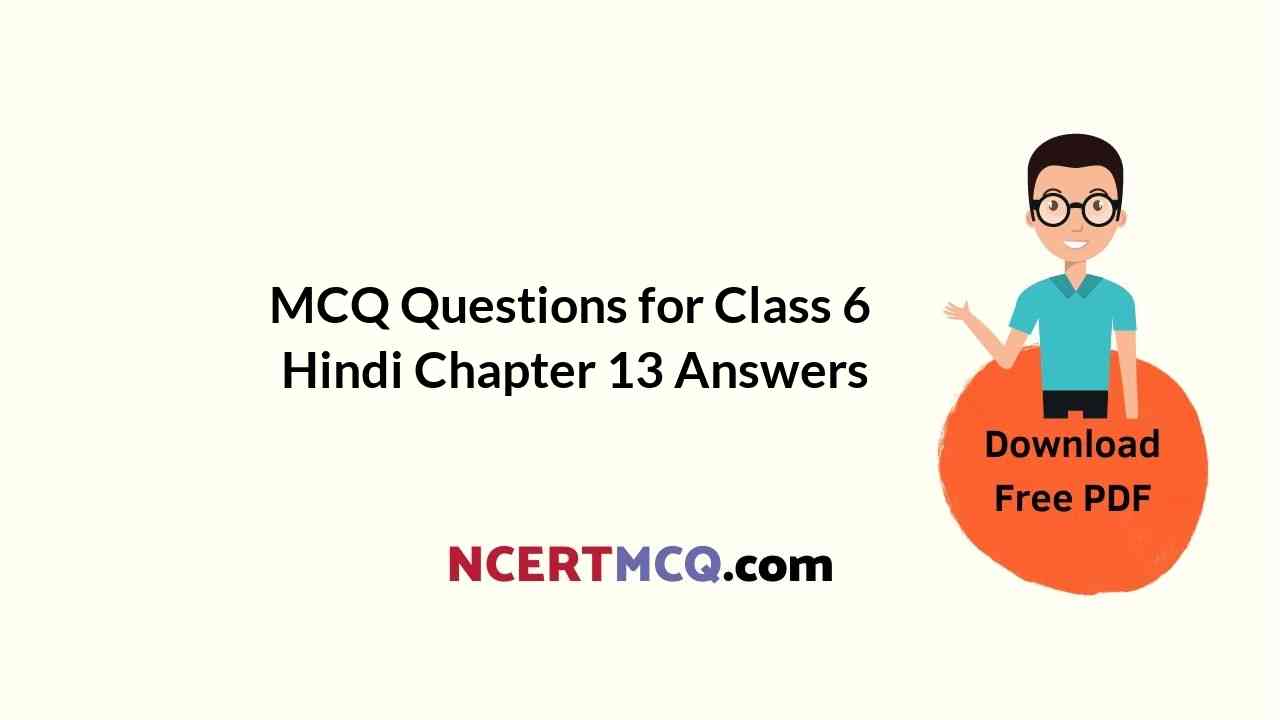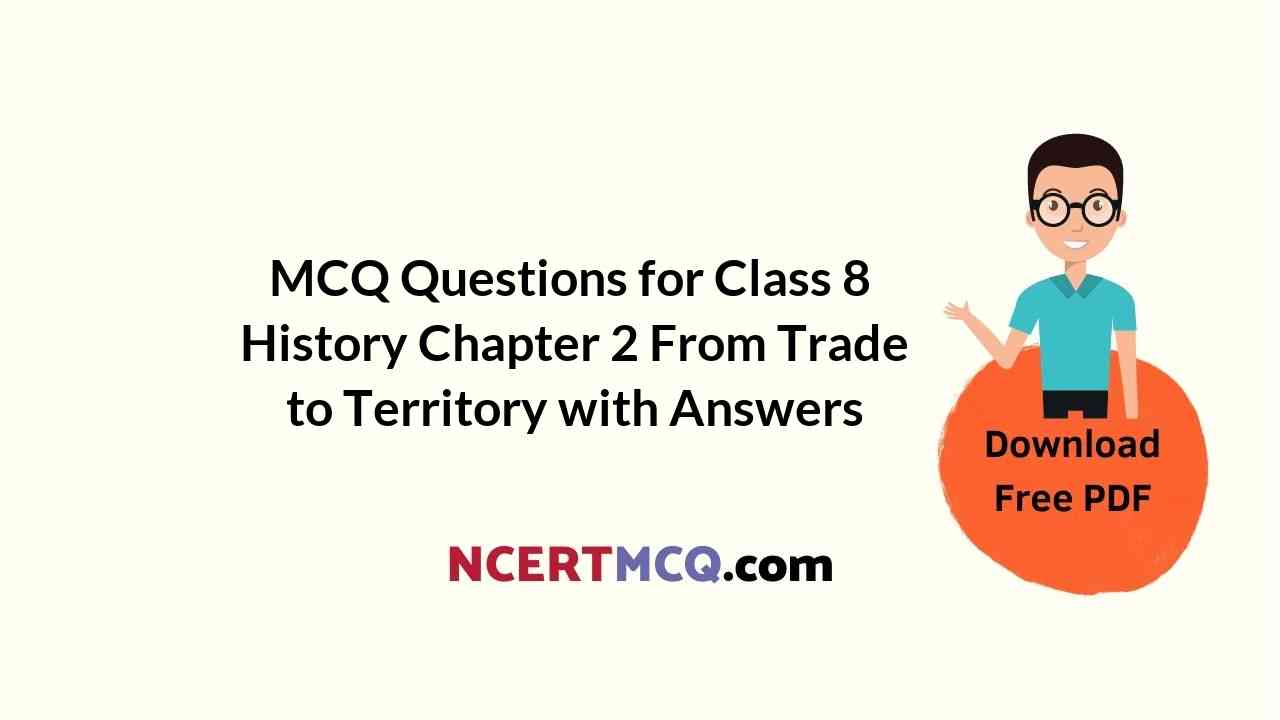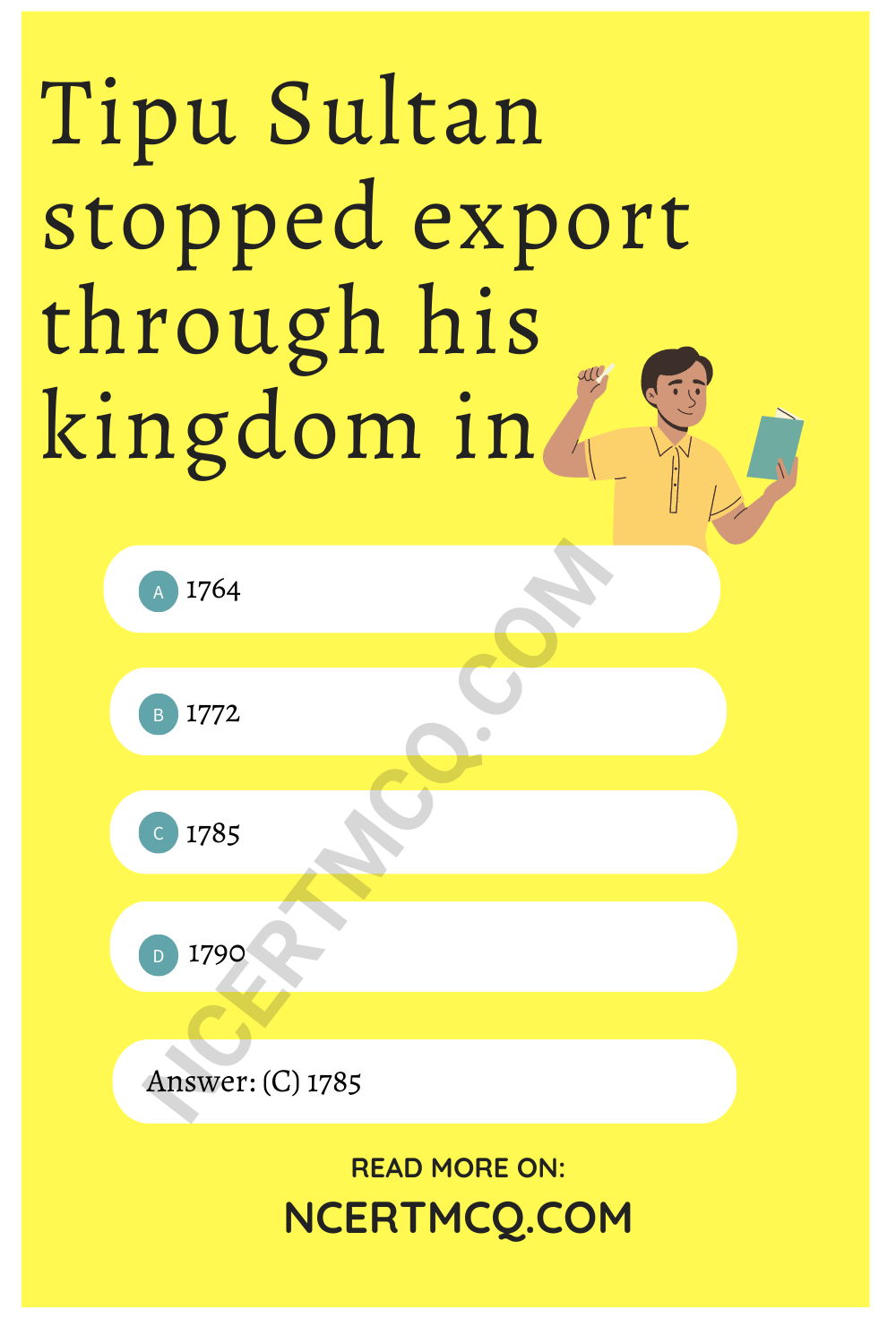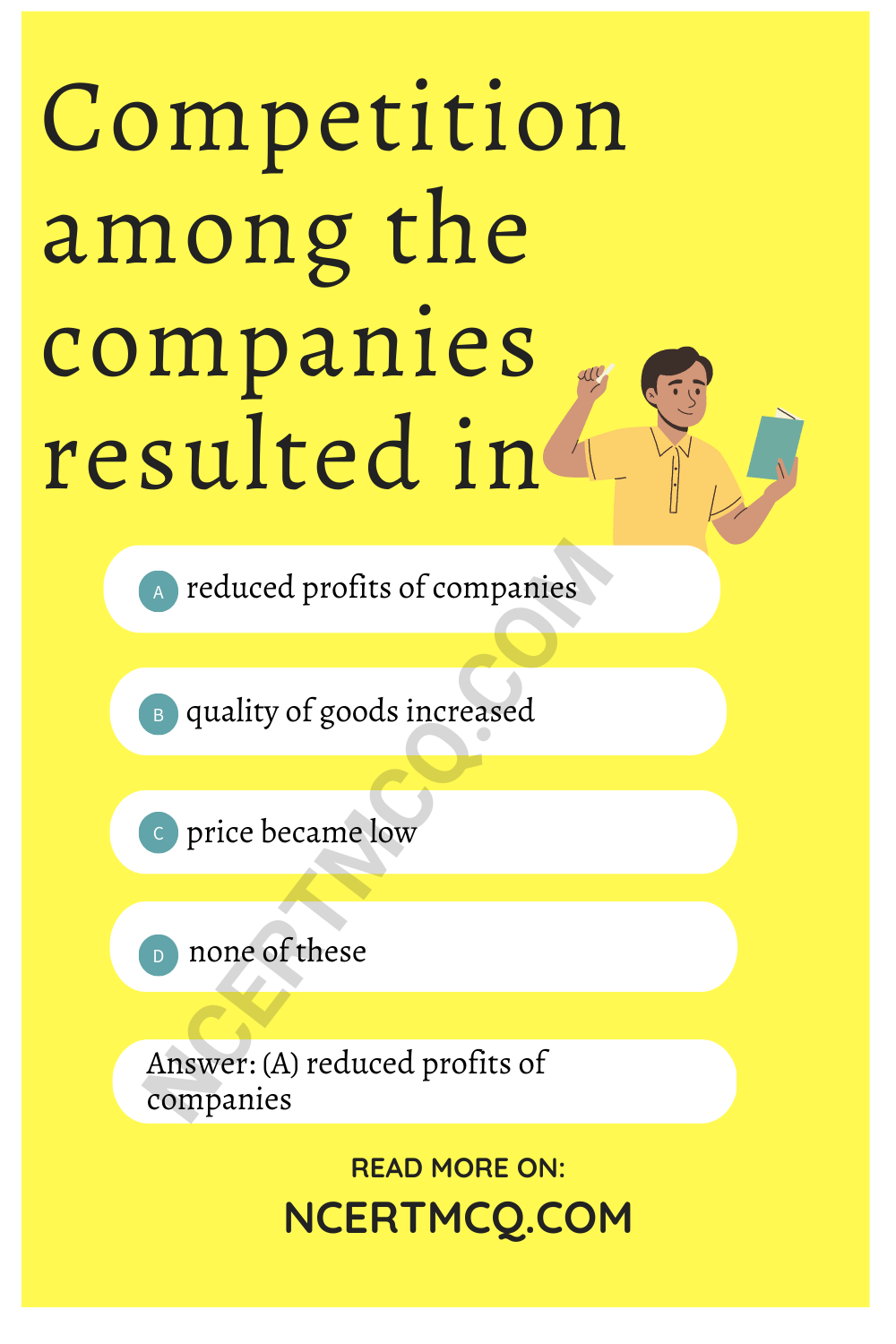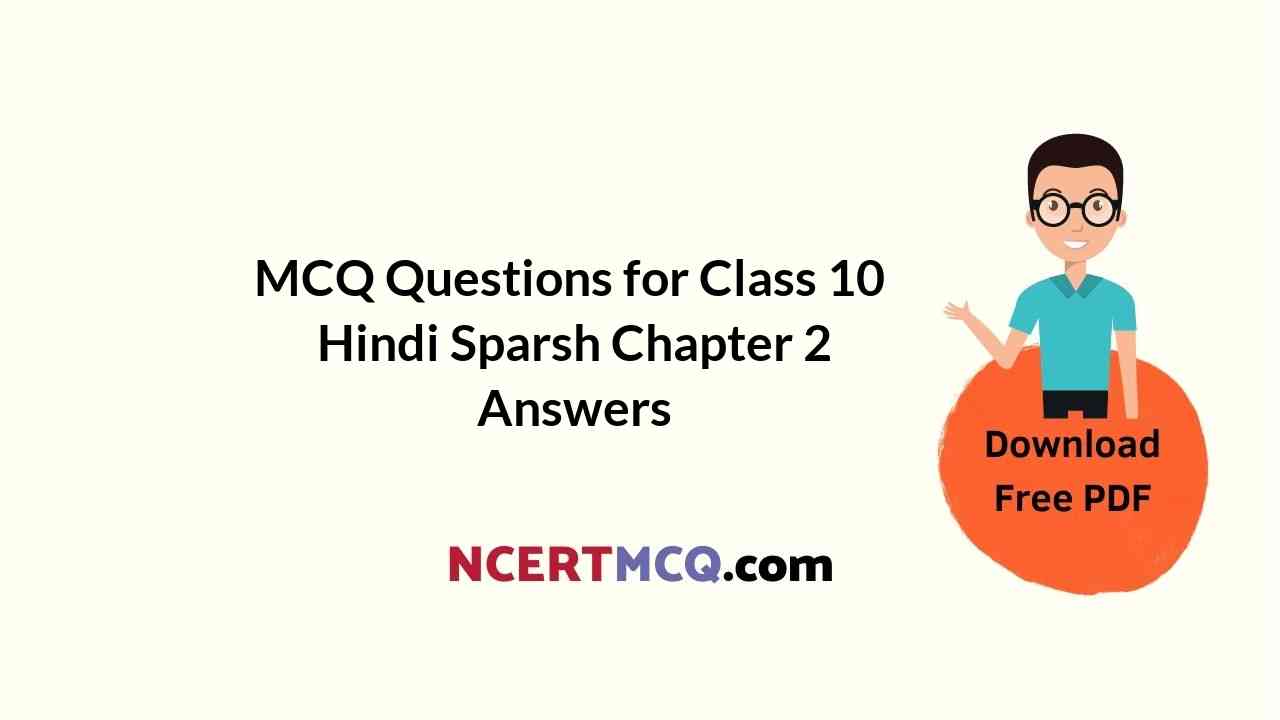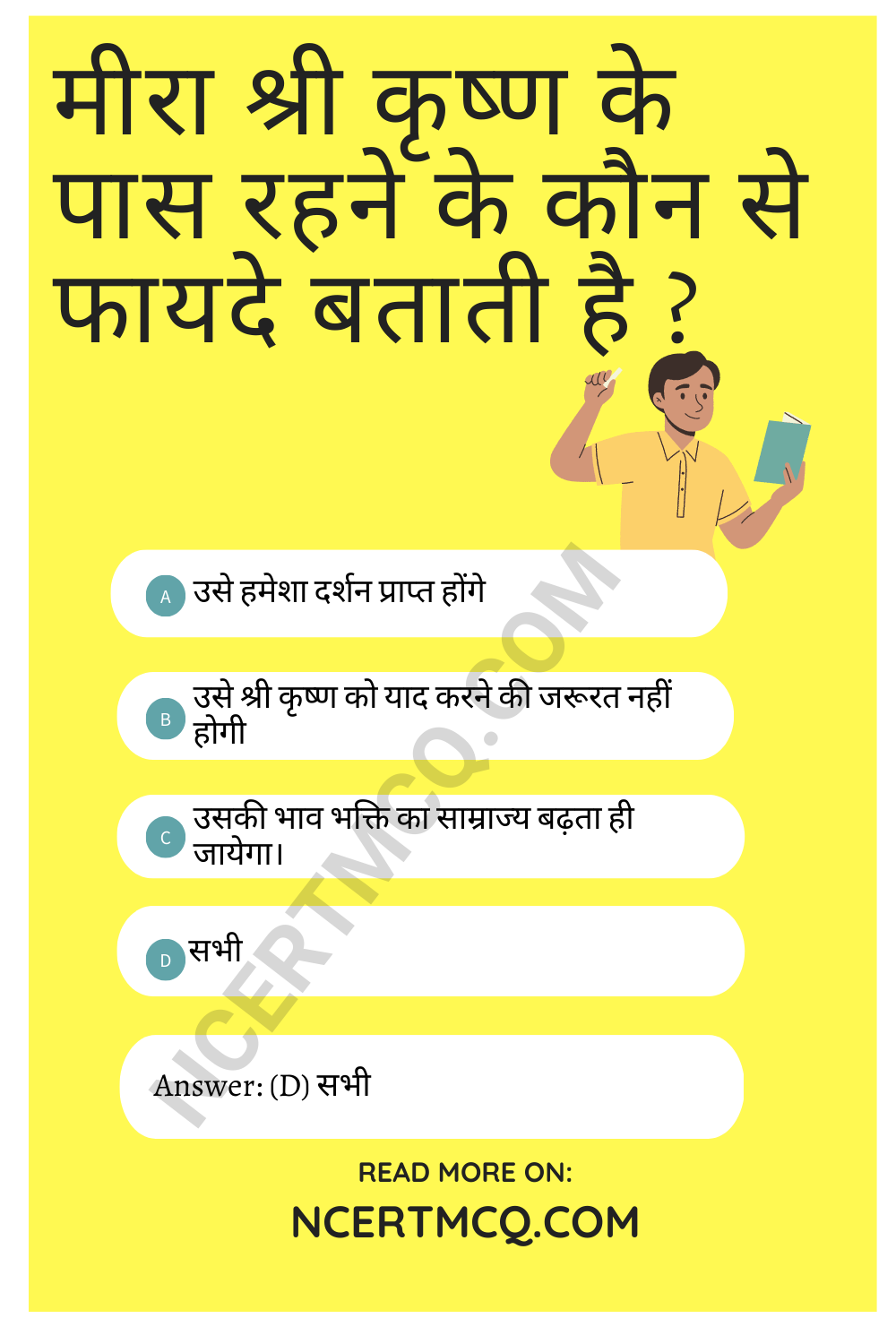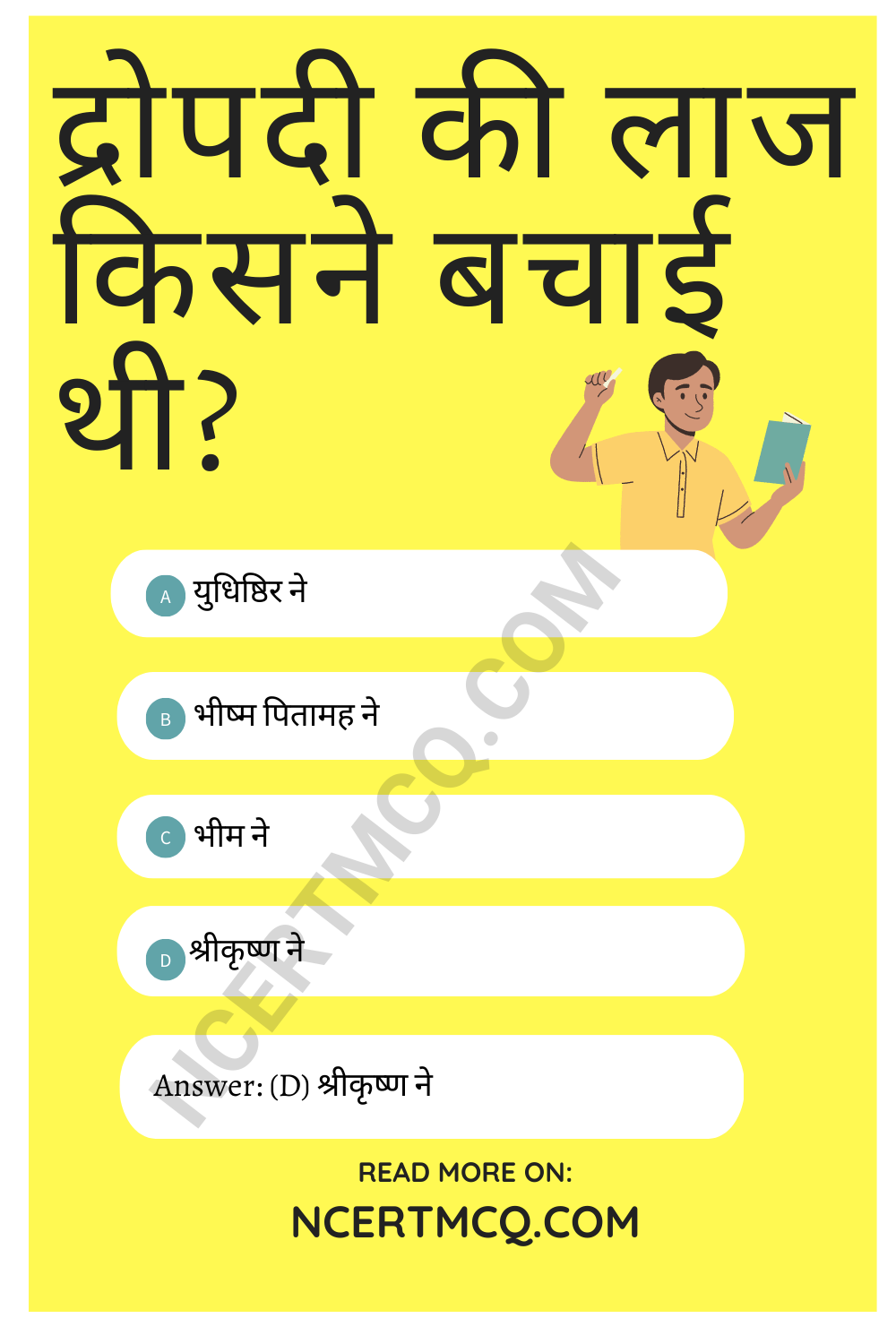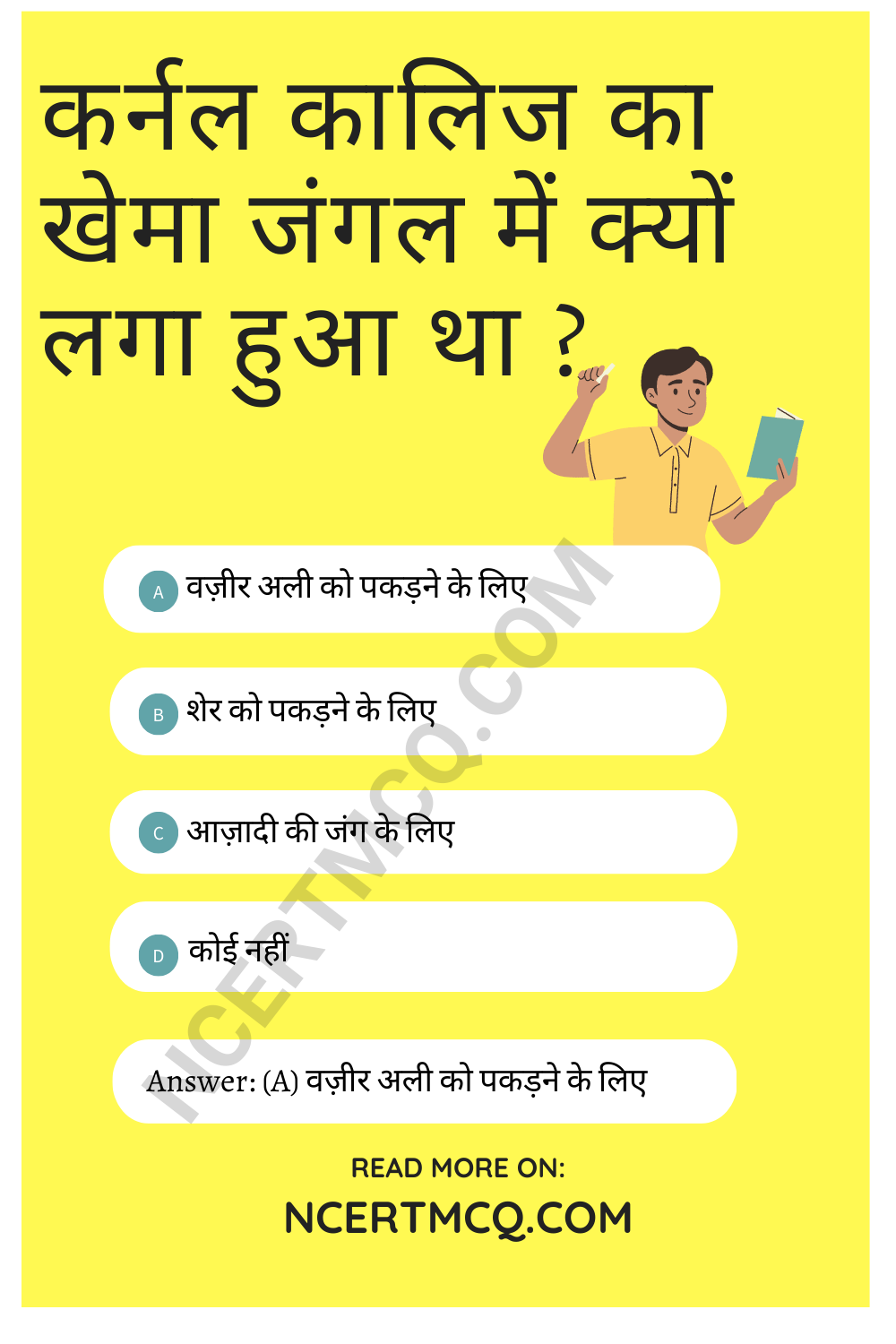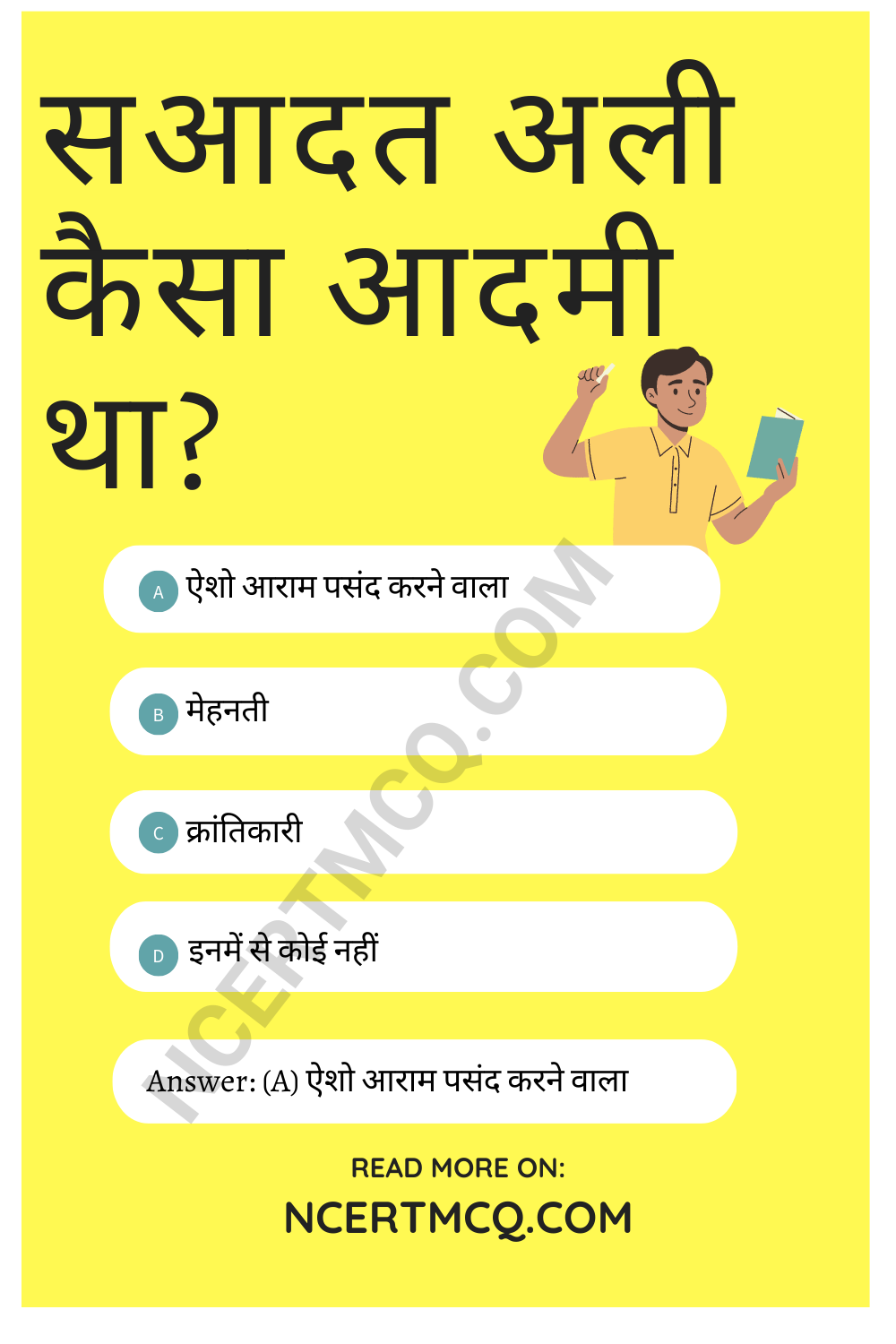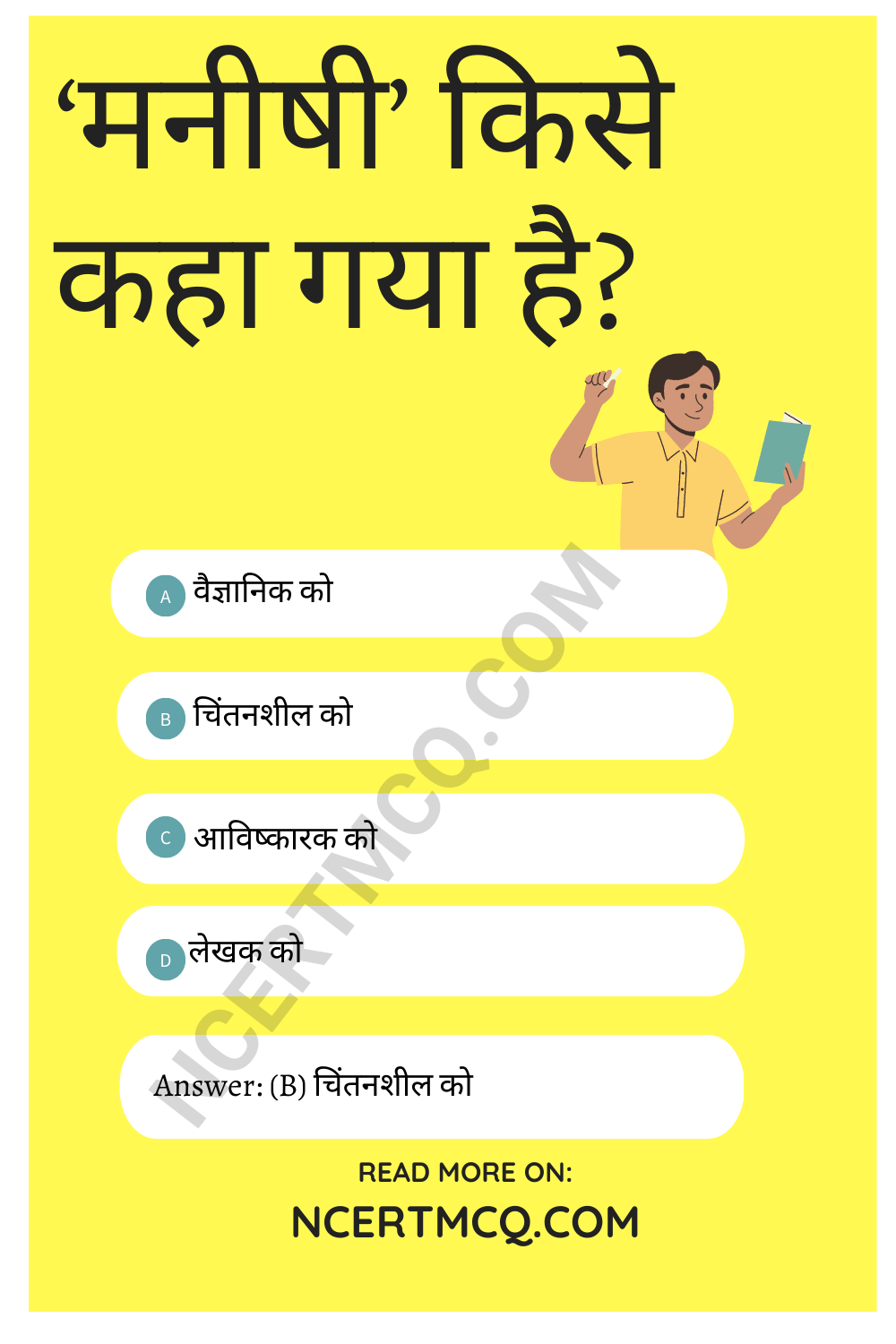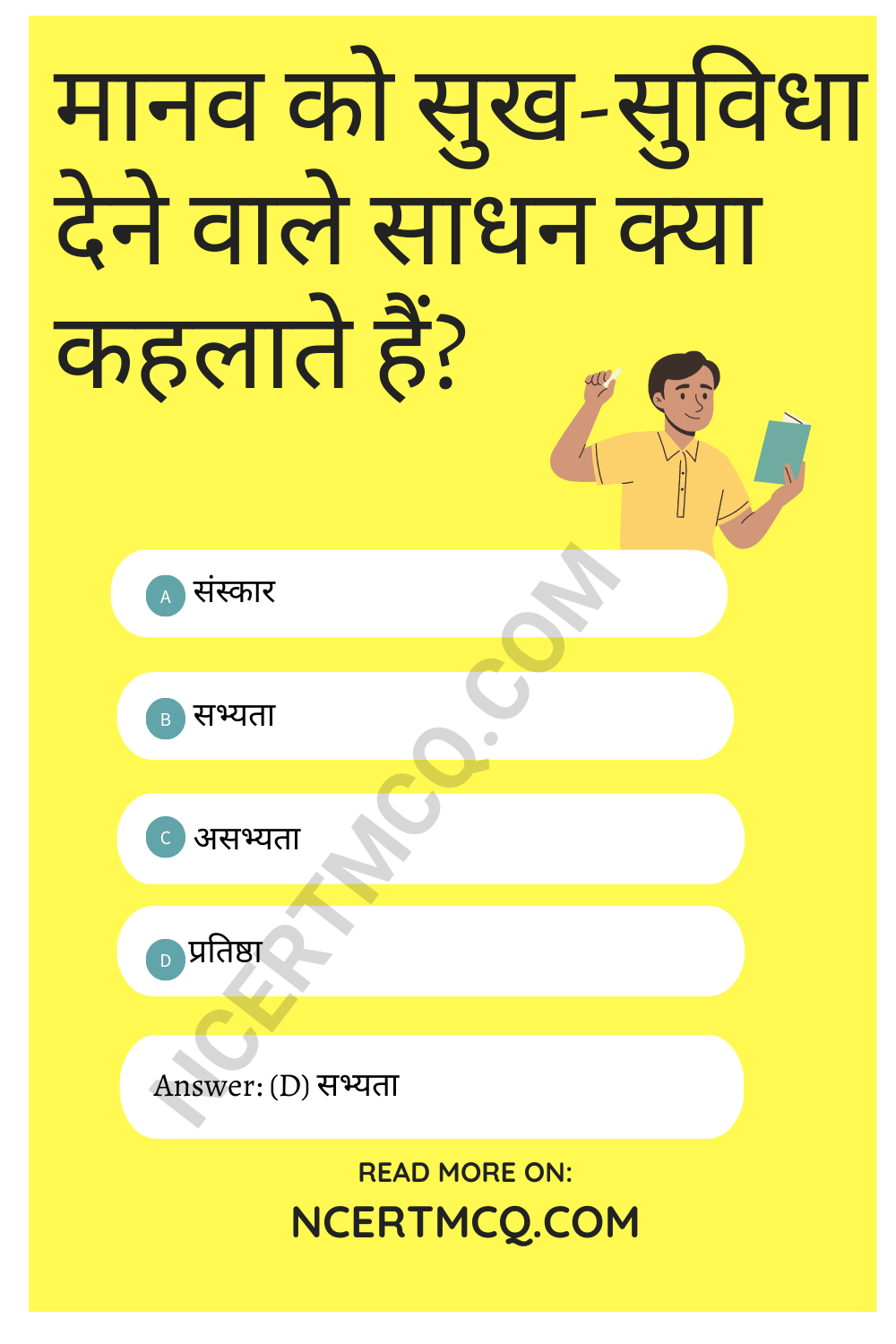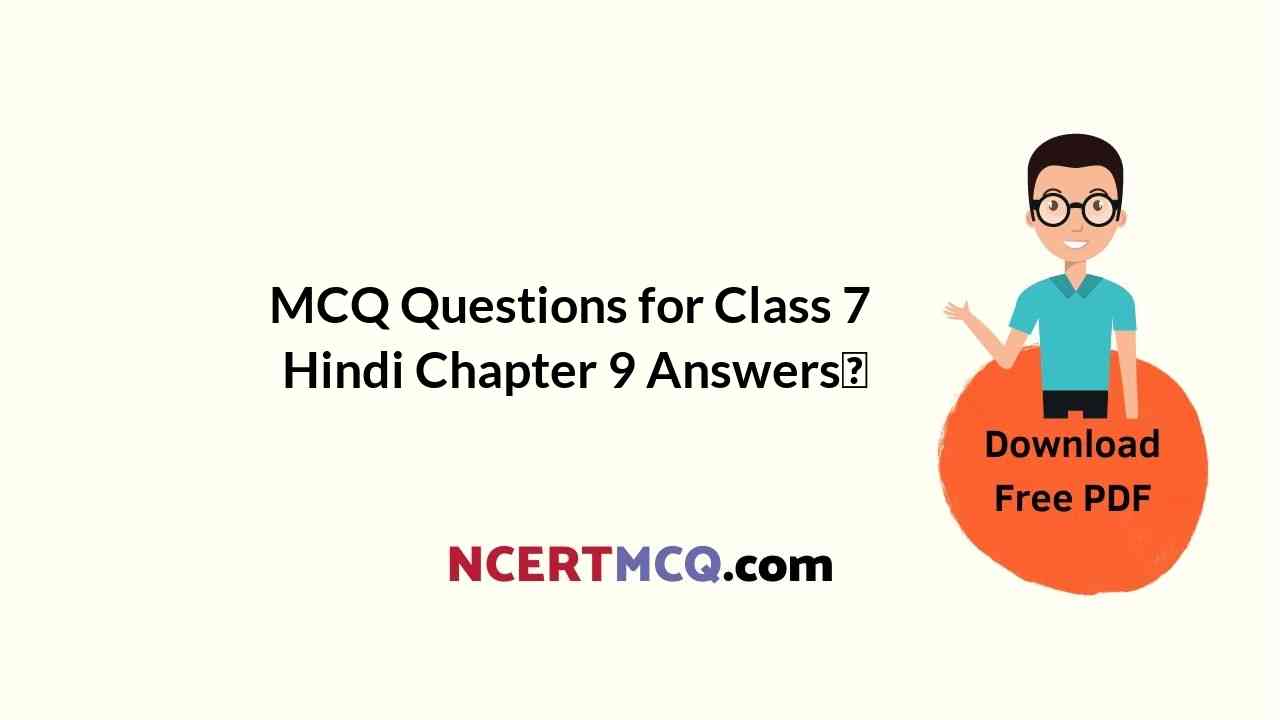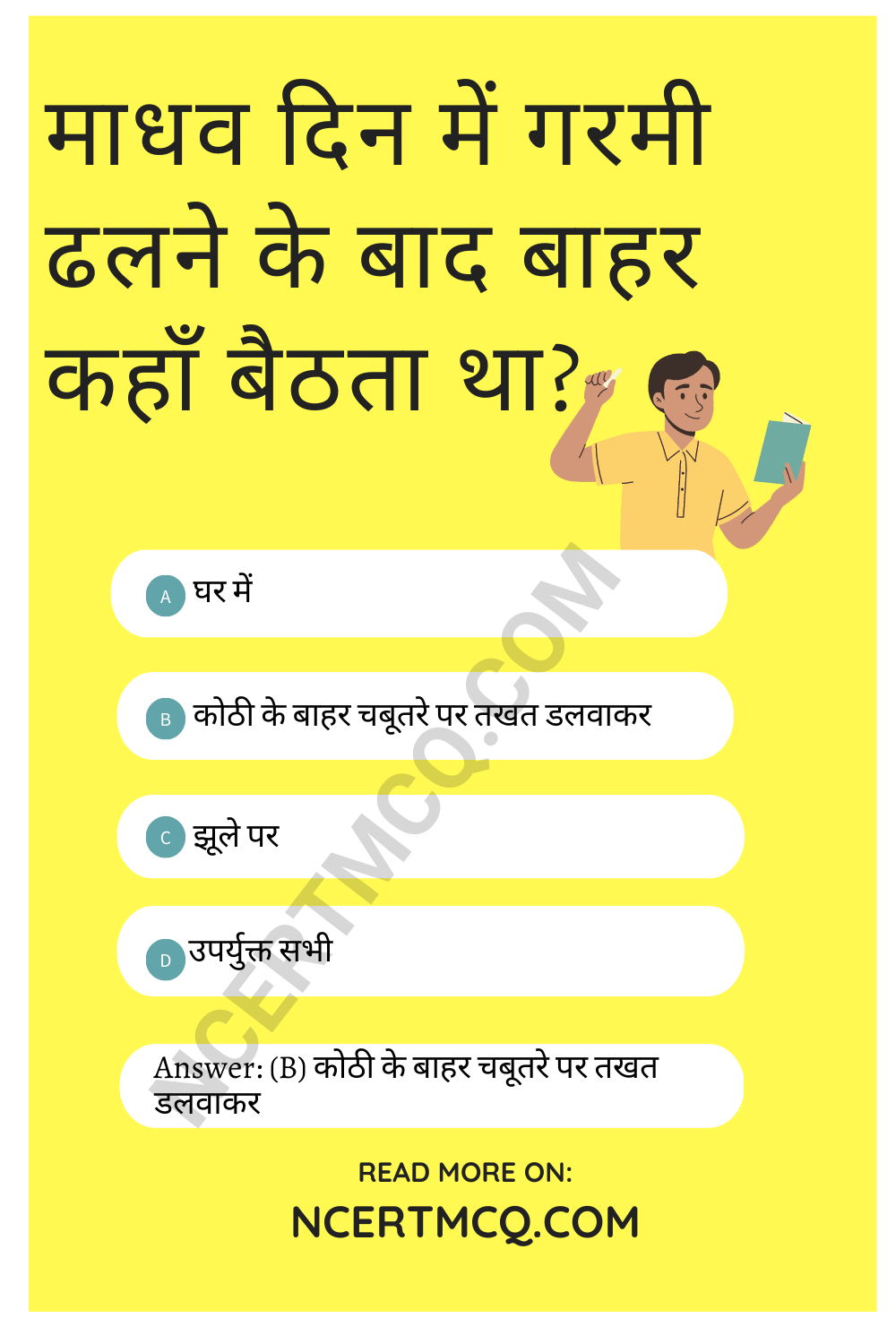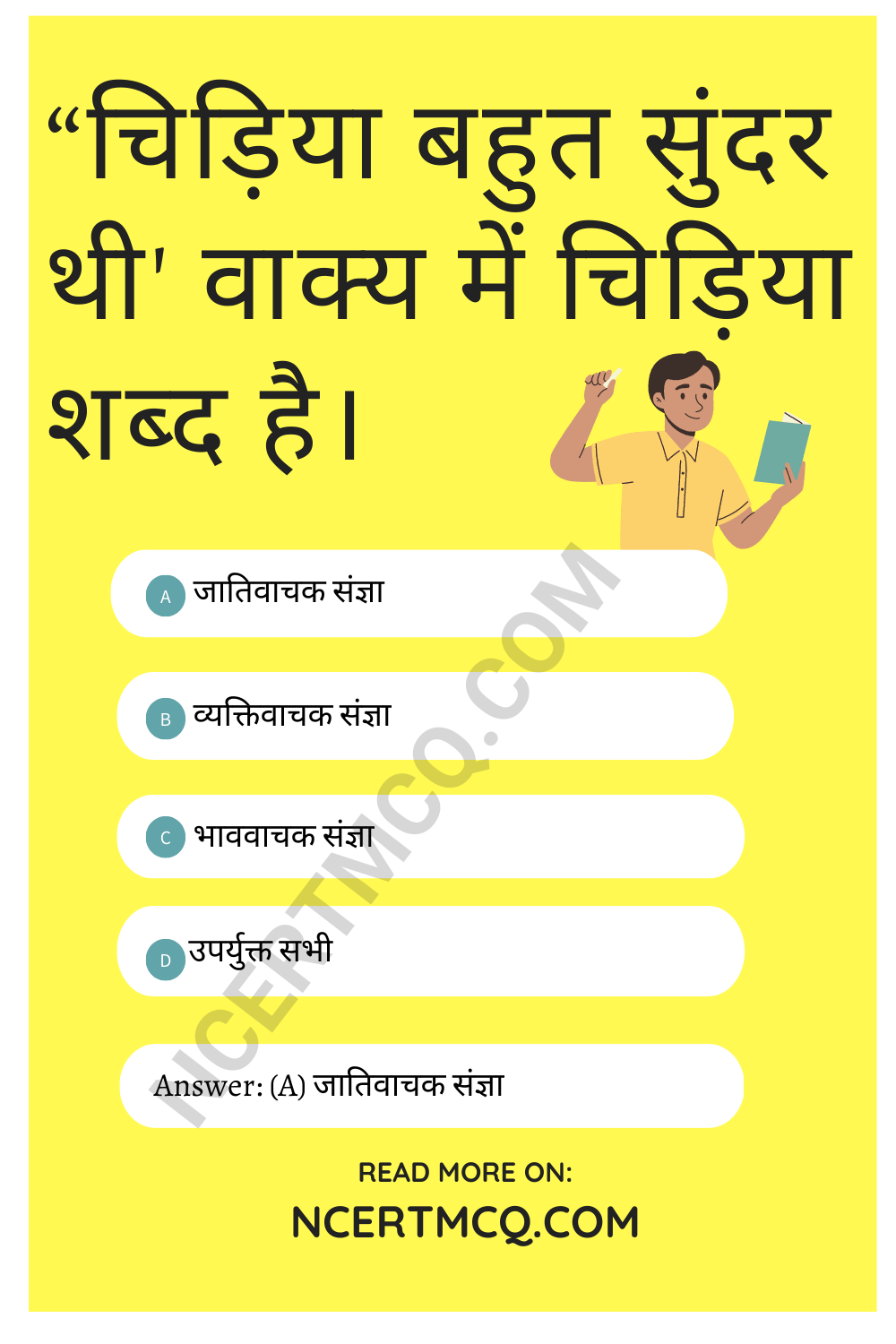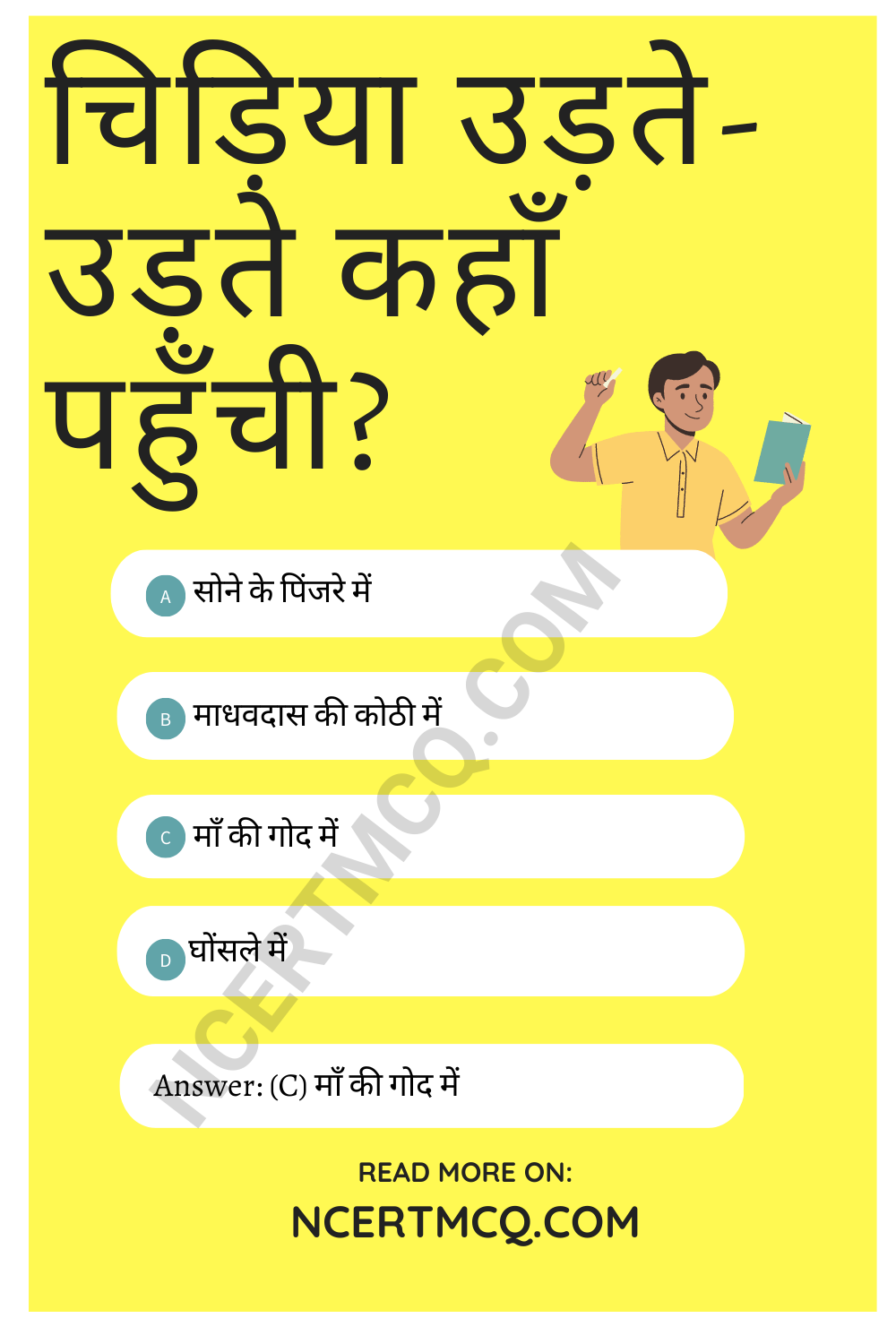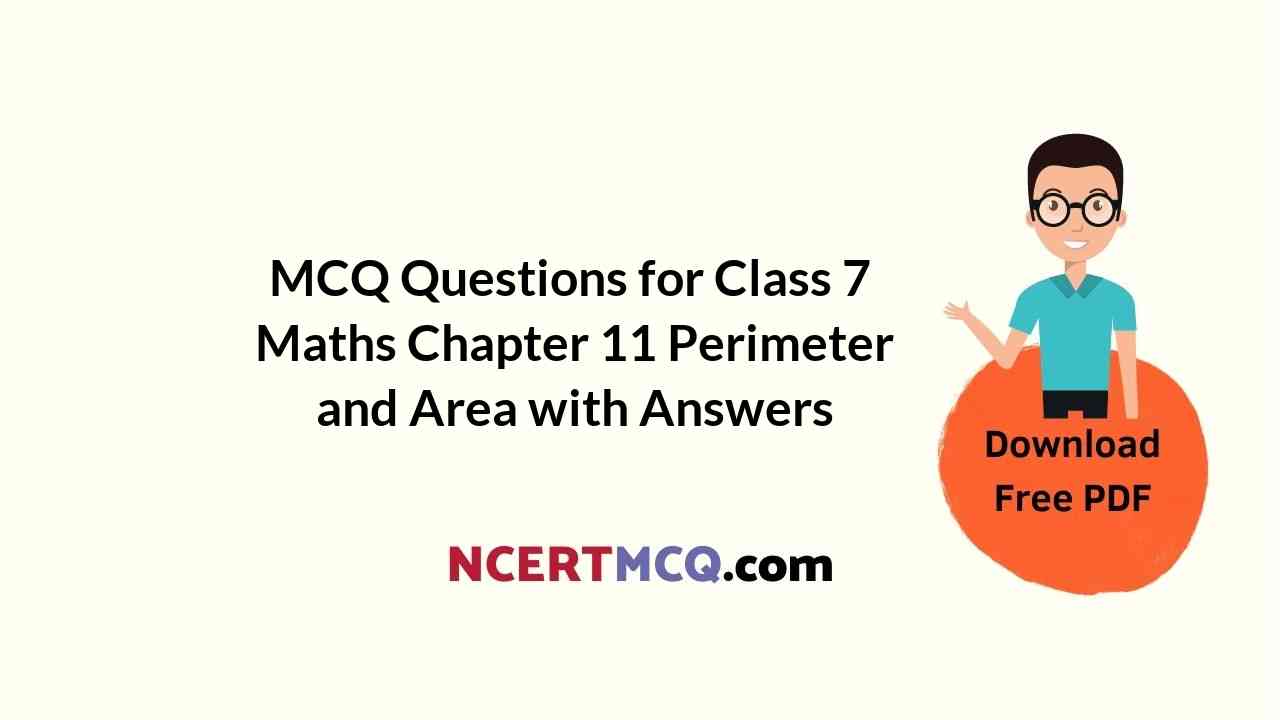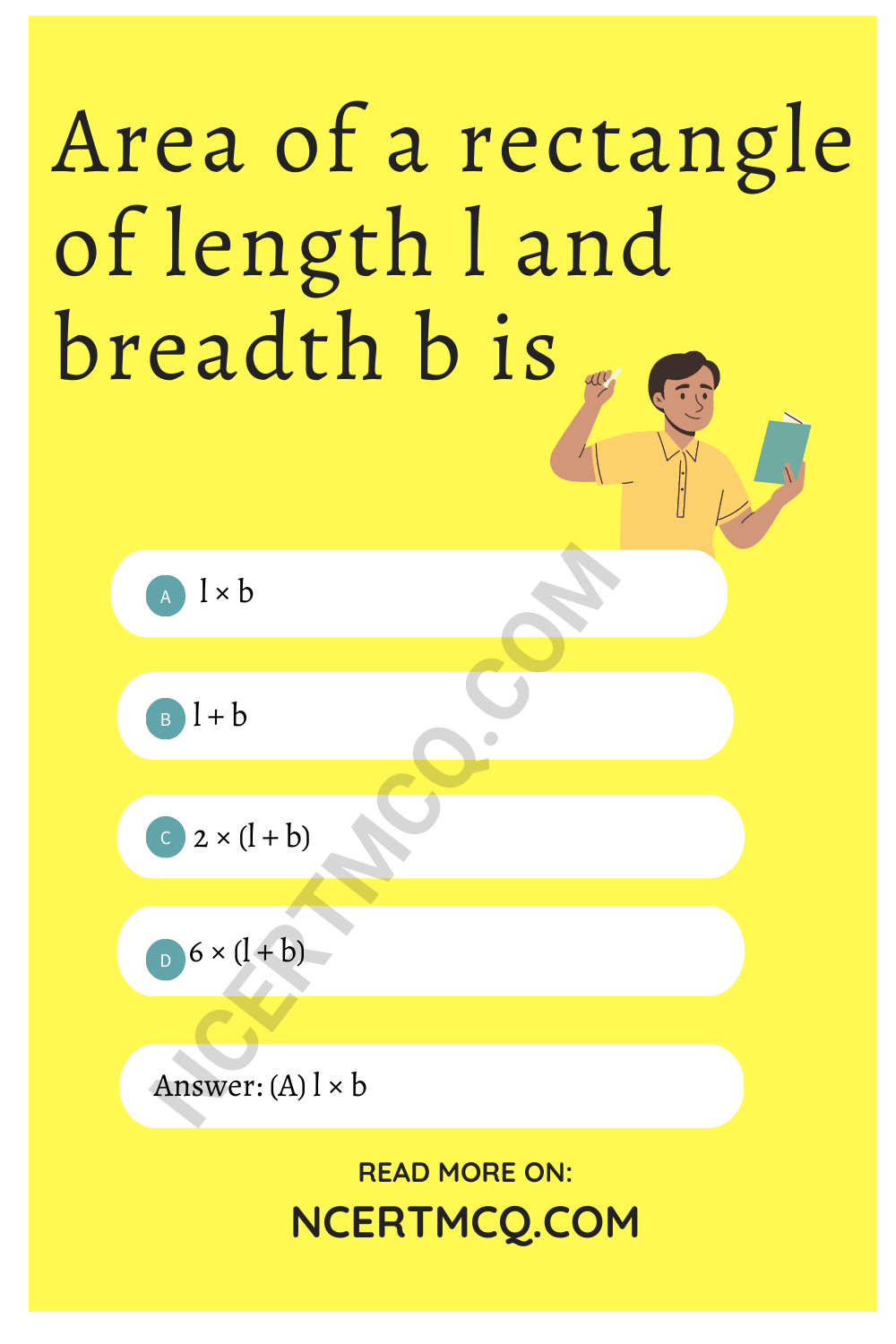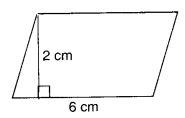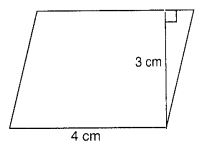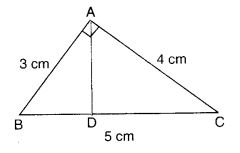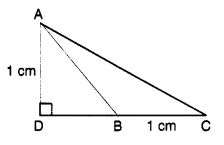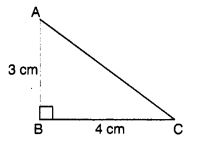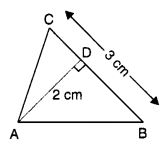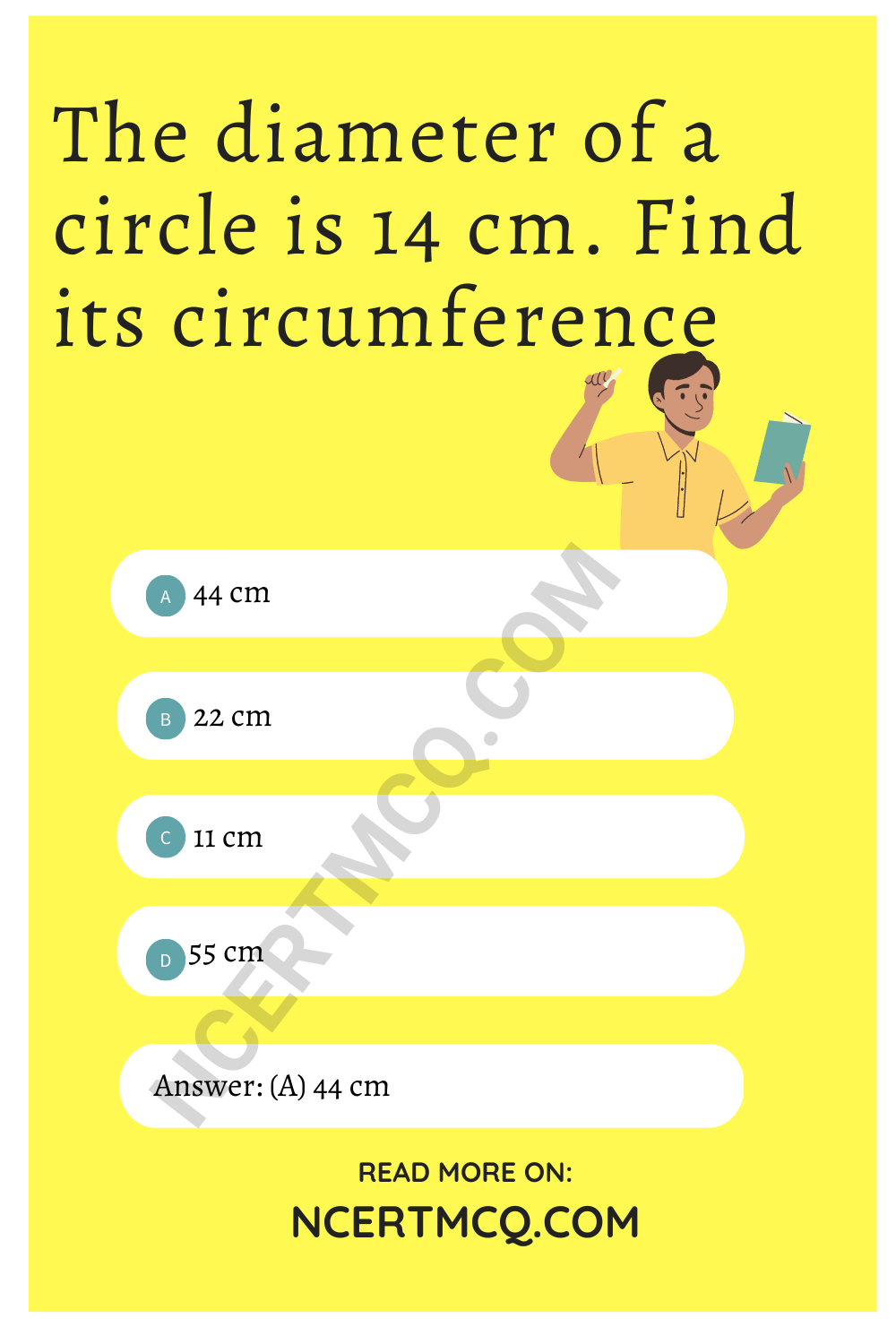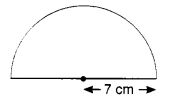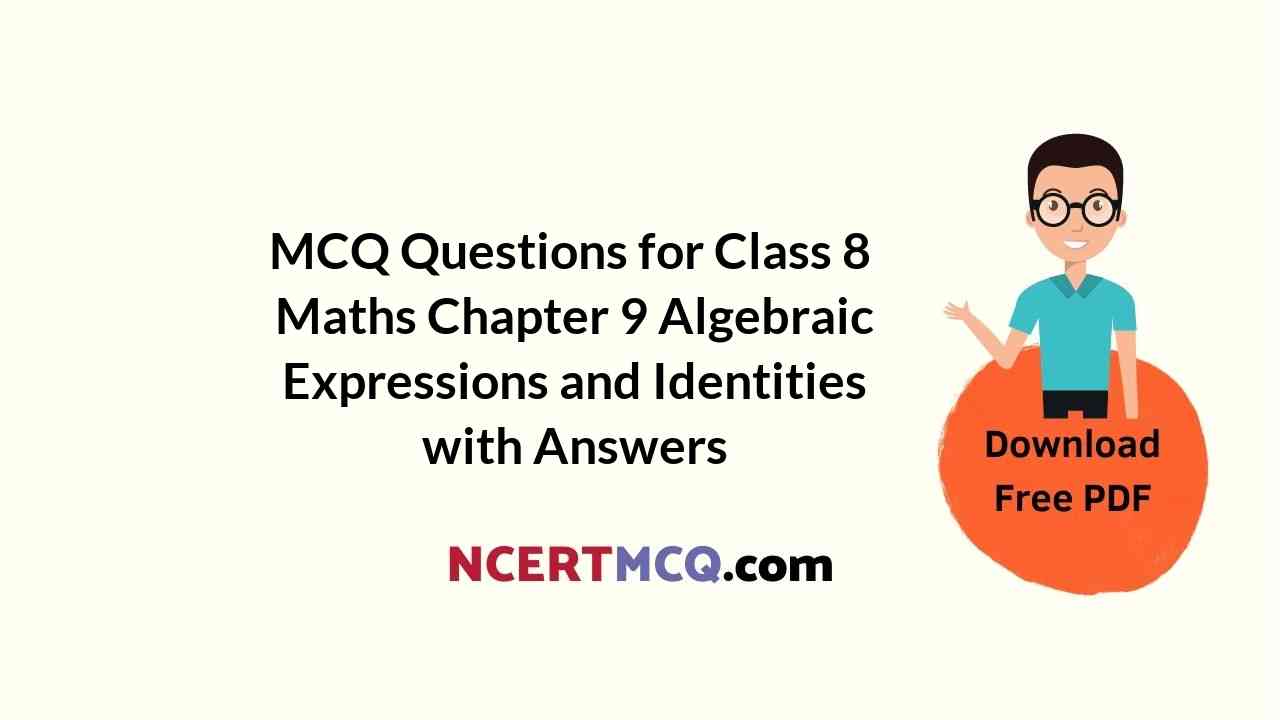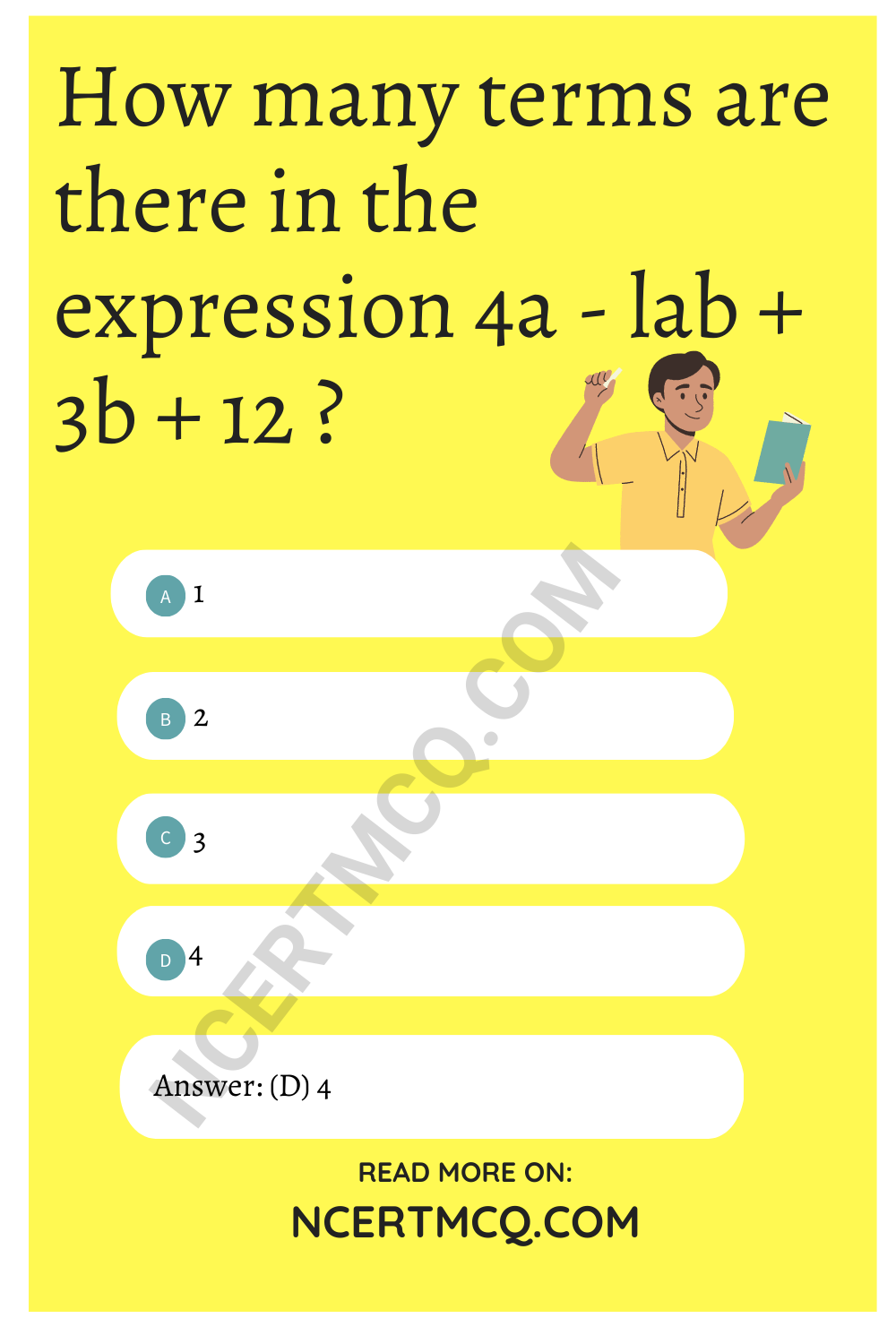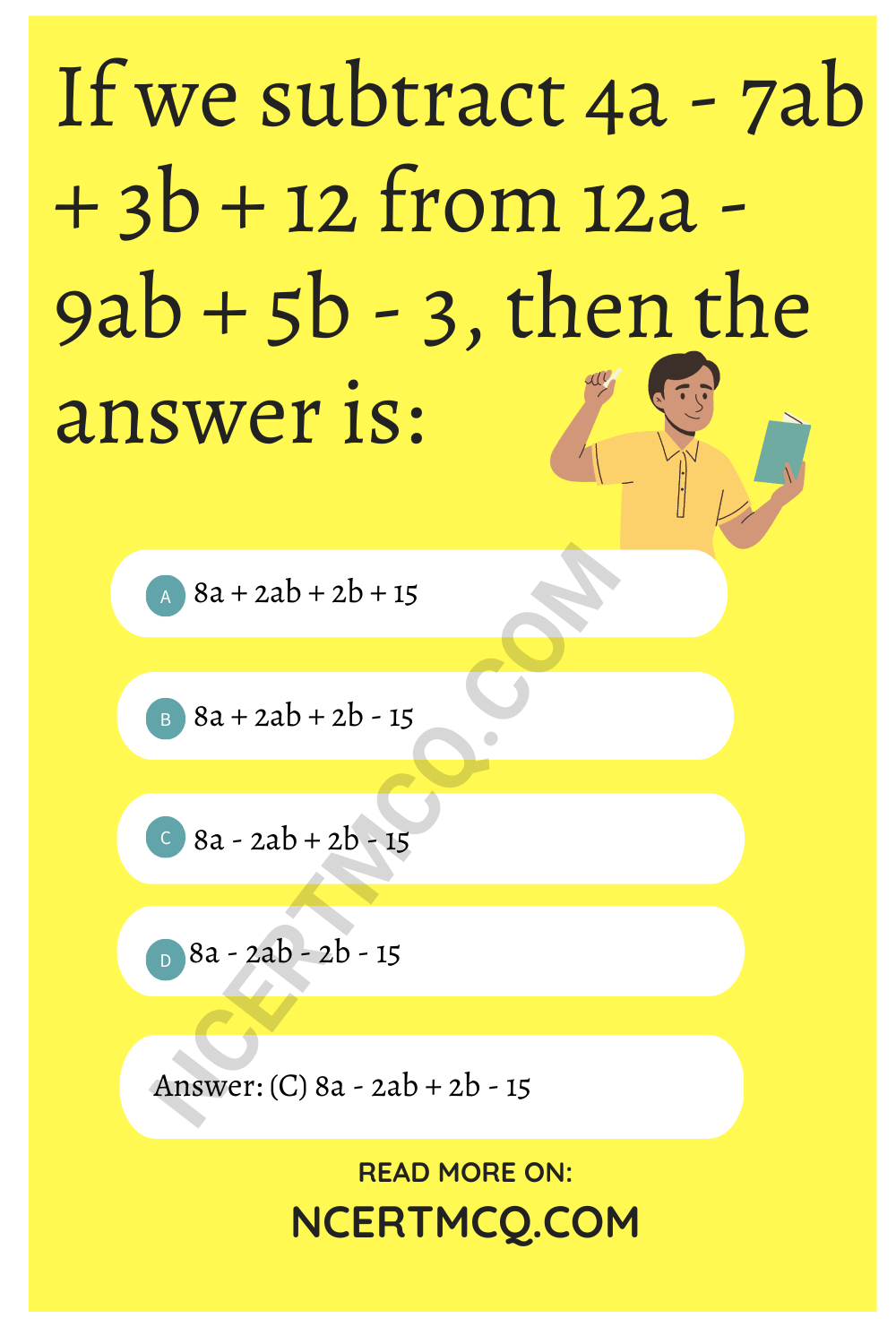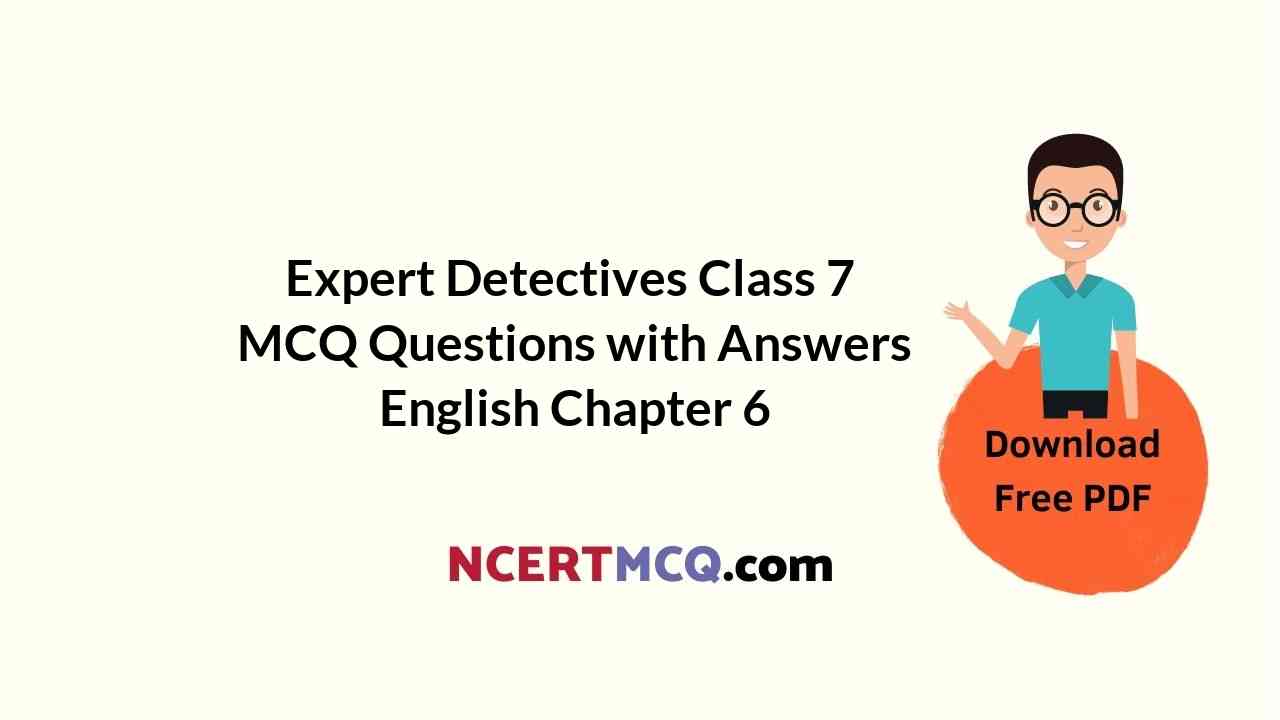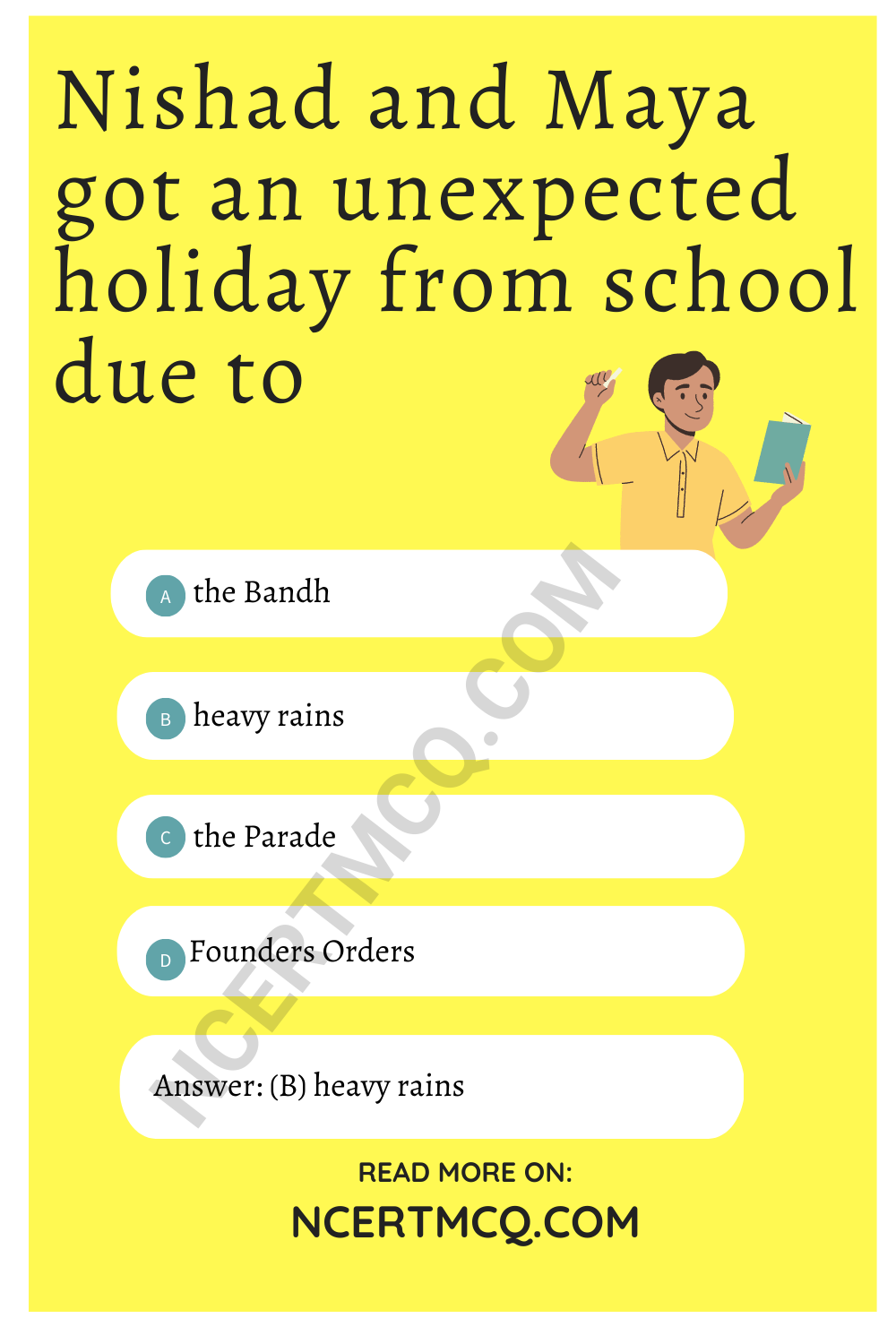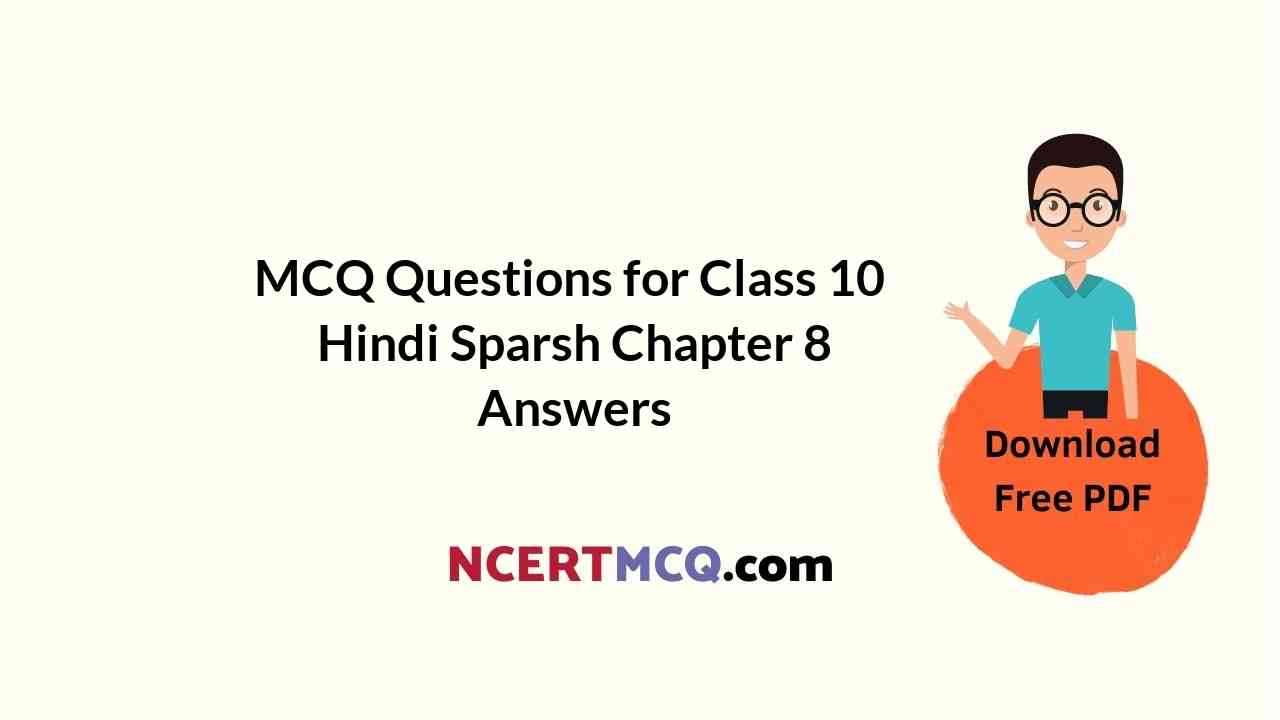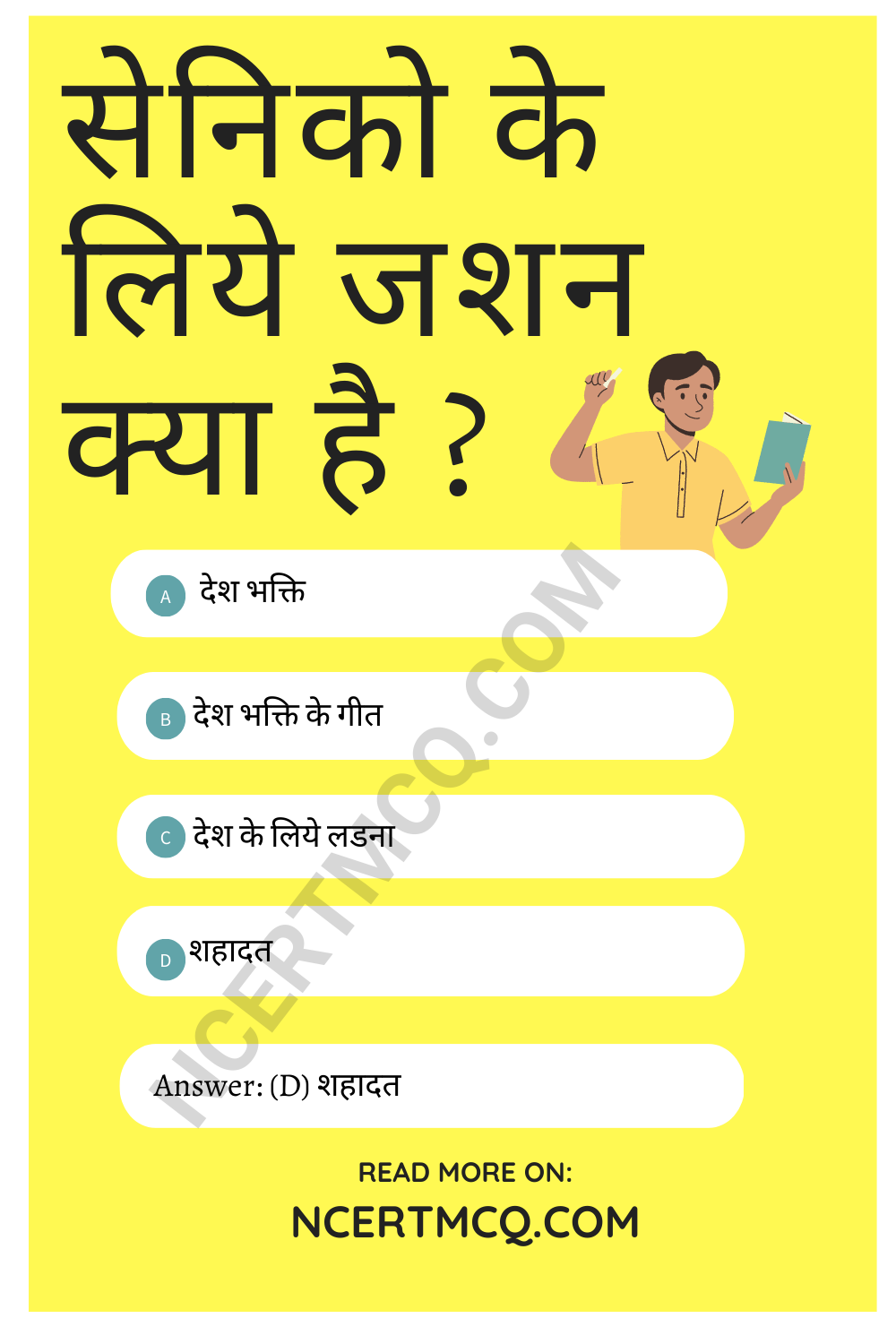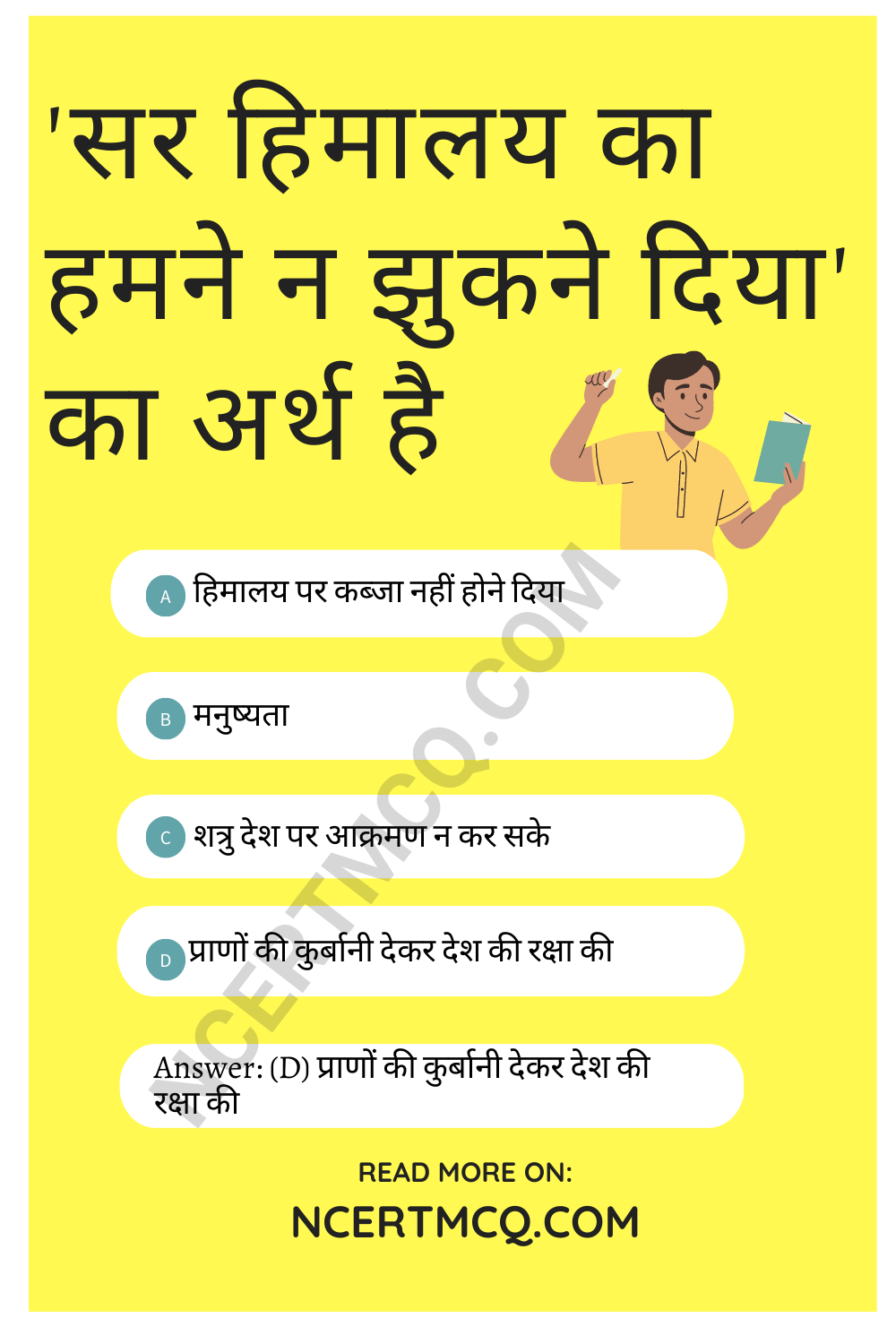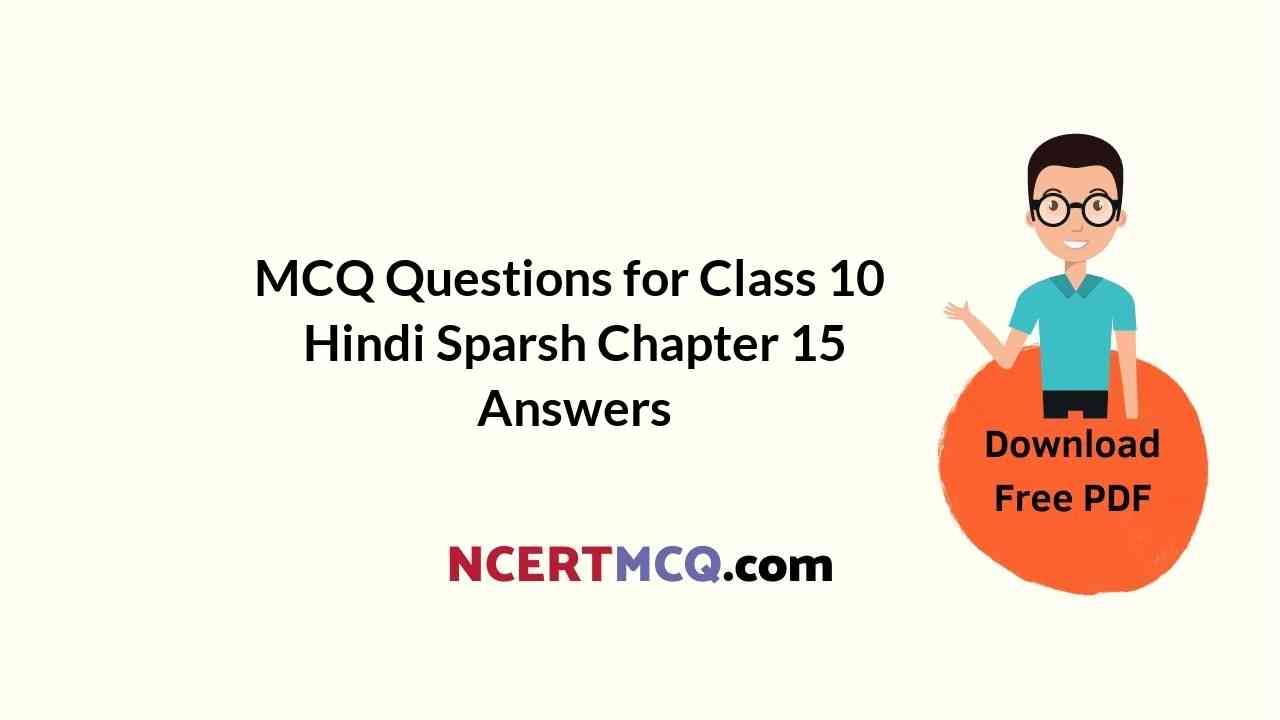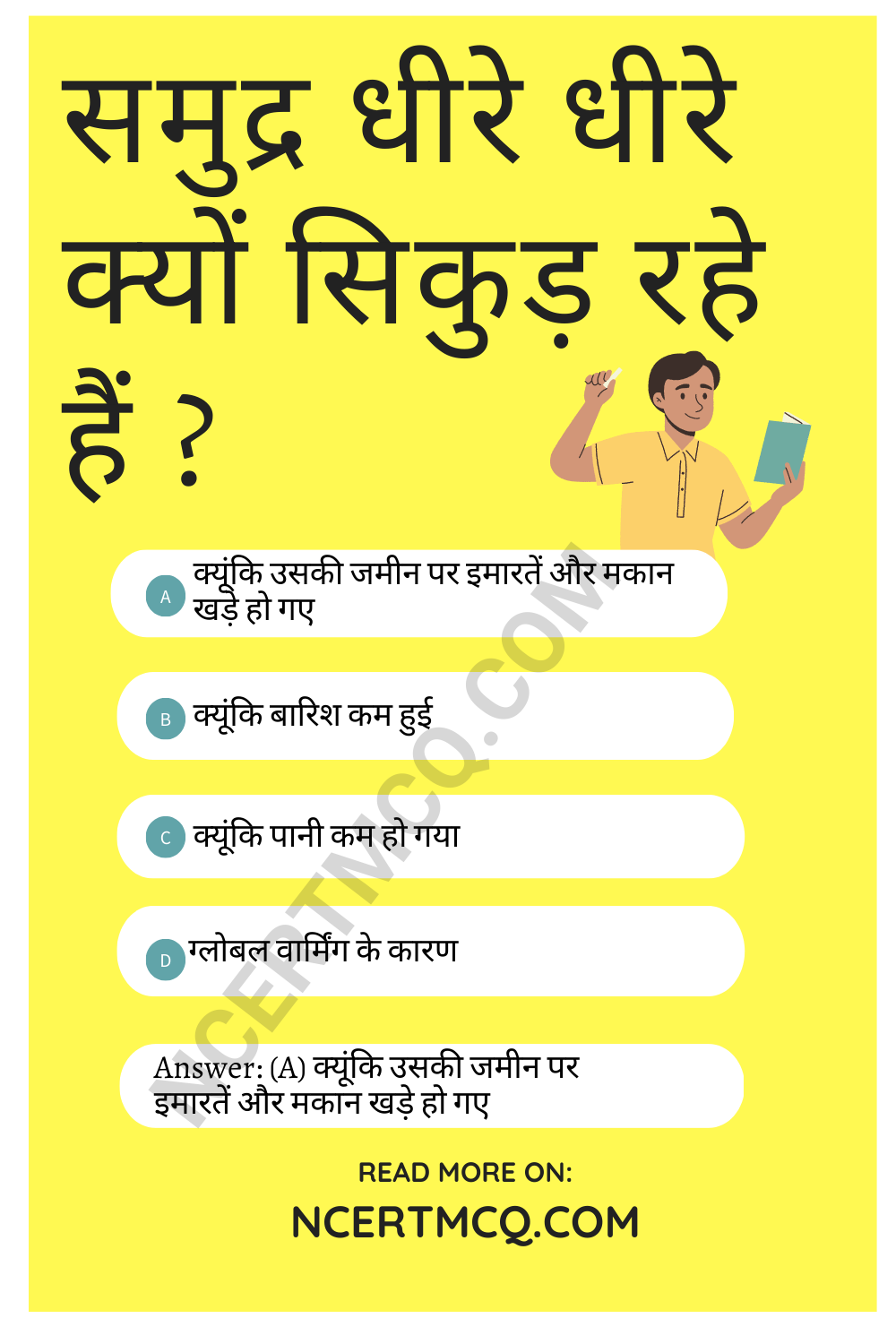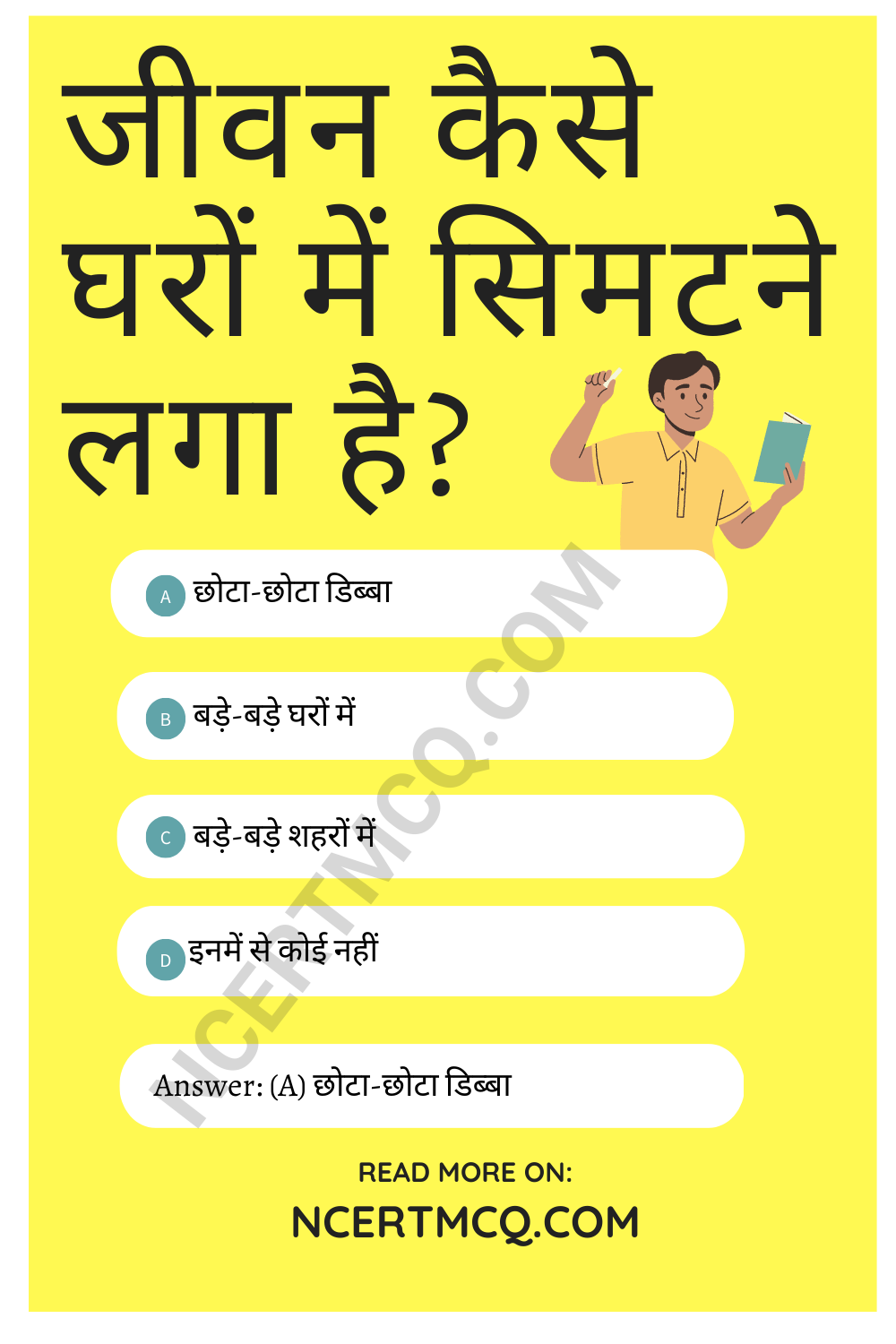Check the below NCERT MCQ Questions for Class 6 Hindi Vasant Chapter 13 मैं सबसे छोटी होऊँ with Answers Pdf free download. MCQ Questions for Class 6 Hindi with Answers were prepared based on the latest exam pattern. We have provided मैं सबसे छोटी होऊँ Class 6 Hindi MCQs Questions with Answers to help students understand the concept very well.
Students can also read NCERT Solutions for Class 6 Hindi Chapter 13 Questions and Answers at LearnInsta. Here all questions are solved with a detailed explanation, It will help to score more marks in your examinations.
मैं सबसे छोटी होऊँ Class 6 MCQs Questions with Answers
मैं सबसे छोटी होऊँ MCQ Class 6 Question 1.
‘मैं सबसे छोटी होऊँ’ कविता किसके द्वारा लिखी गई है?
(a) भगवत शरण उपाध्याय
(b) गुणाकर मुले
(c) विष्णु प्रभाकर
(d) सुमित्रानंदन पंत
Answer
Answer: (d) सुमित्रानंदन पंत
Class 6 Hindi Chapter 13 MCQ Question 2.
सबसे छोटी होने की कामना क्यों की गई है?
(a) अपनी जिम्मेदारियाँ न सँभालने के लिए
(b) सदा माँ के साथ रहने केलिए
(c) डर से बचने के लिए
(d) सदा सुरक्षित रहने केलिए
Answer
Answer: (b) सदा माँ के साथ रहने केलिए
Main Sabse Chhoti Hun MCQ Question 3.
बच्ची किसके साथ रहने के लिए बड़ी नहीं होना चाहती?
(a) माँ
(b) पिता
(c) दादा-दादी
(d) दोस्त
Answer
Answer: (a) माँ
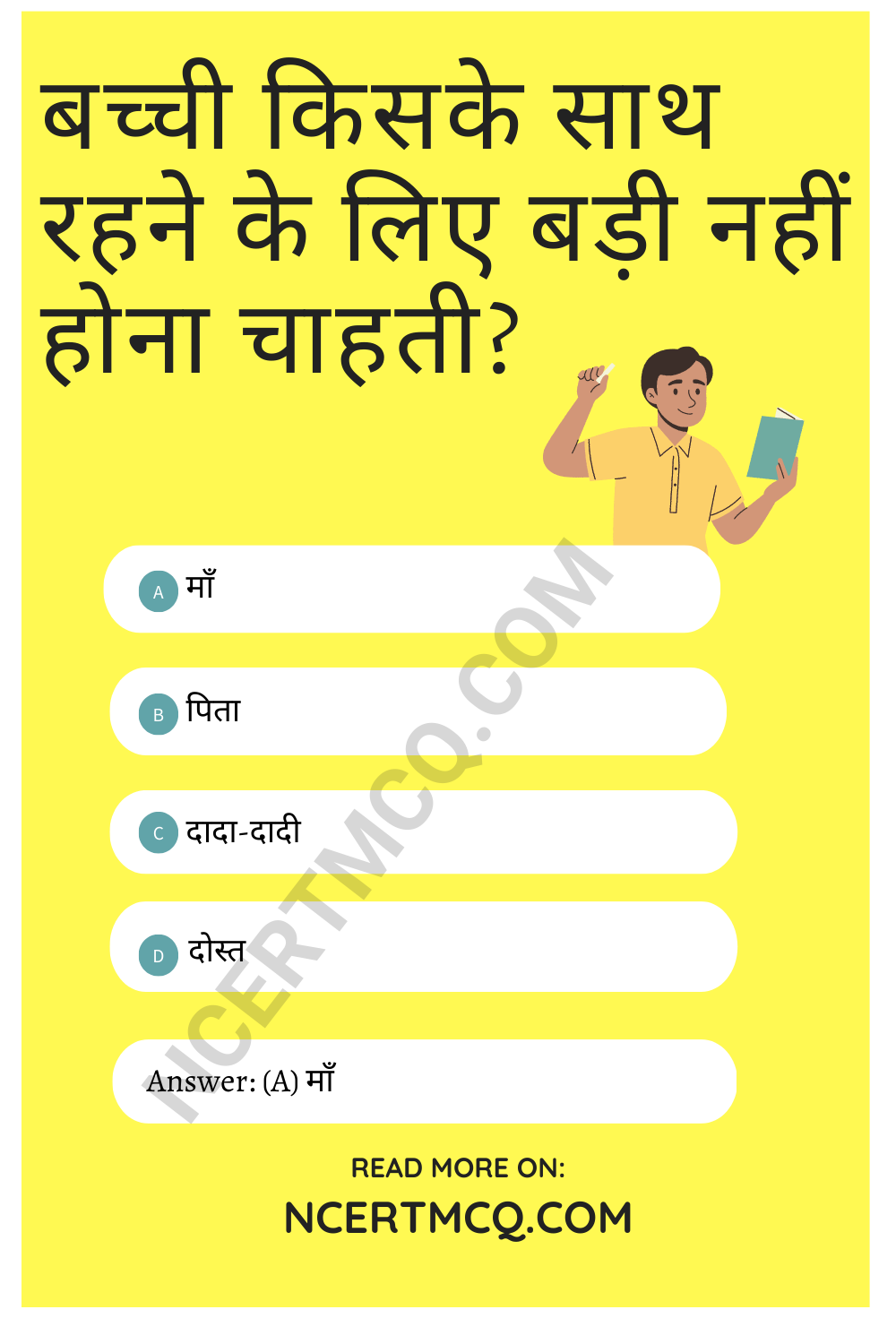
MCQ Questions For Class 6 Hindi Chapter 13 Question 4.
माँ के आँचल की छाया में बच्ची कैसा महसूस करती है?
(a) निर्भय
(b) उदास
(c) भयभीत
(d) इनमें कोई नहीं
Answer
Answer: (a) निर्भय
Ncert Class 6 Hindi Chapter 13 MCQ Question 5.
बड़ी बनने का क्या नुकसान है ? .
(a) बड़ी बनने से माँ सदा साथ नहीं रहती
(b) बड़ी होने पर कोई खिलौना नहीं देता
(c) बड़ी होने पर कोई जन्म दिन नहीं मानता
(d) बड़ी होने पर शादी कर दी जाती है
Answer
Answer: (a) बड़ी बनने से माँ सदा साथ नहीं रहती
(1)
मैं सबसे छोटी होऊँ,
तेरी गोदी में सोऊँ,
तेरा अंचल पकड़-पकड़कर
फिरूँ सदा माँ! तेरे साथ,
कभी न छोड़ें तेरा हाथ!
बड़ा बनाकर पहले हमको
तू पीछे छलती है मात!
हाथ पकड़ फिर सदा हमारे
साथ नहीं फिरती दिन-रात!
अपने कर से खिला, धुला मुख,
धूल पोंछ, सज्जित कर गात,
थमा खिलौने, नहीं सुनाती
हमें सुखद परियों की बात!
ऐसी बड़ी न होऊँ मैं
तेरा स्नेह न खोऊँ मैं,
तेरे आंचल की छाया में
छिपी रहूँ निस्पृह, निर्भय,
कहूँ-दिखा दे चंद्रोदय!
Class 6 Hindi Ch 13 MCQ Question 1.
इस कविता के लेखक कौन हैं?
(a) भगवत शरण उपाध्याय
(b) सुमित्रानंदन पंत
(c) कृष्णा सोबती
(d) सुभद्रा कुमारी चौहान
Answer
Answer: (b) सुमित्रानंदन पंत
Class 6 Hindi Chapter 13 Extra Questions Question 2.
बालिका क्या होना चाहती है?
(a) सबसे बड़ी
(b) सबसे छोटी
(c) प्रिय बालिका
(d) सामान्य
Answer
Answer: (b) सबसे छोटी
Class 6 Chapter 13 Hindi MCQ Question 3.
बच्ची किसके साथ फिरना चाहती है?
(a) अपने भाई के
(b) अपनी बहन के
(c) अपने मित्रों के
(d) अपनी माँ के
Answer
Answer: (d) अपनी माँ के
Main Sabse Chhoti Hun Question Answer Class 6 Question 4.
सबसे छोटी होने पर माँ से कौन-कौन से सुख प्राप्त होते हैं?
(a) माँ के साथ सोने का
(b) माँ के हाथों से खाना खाने का
(c) गोदी में सोने और उनका आँचल पकड़कर उसके साथ घूमने का
(d) माँ के साथ सारा दिन बिताने का
Answer
Answer: (c) गोदी में सोने और उनका आँचल पकड़कर उसके साथ घूमने का
Question 5.
माँ बच्ची को अब कौन-सी कहानियाँ नहीं सुनाती?
(a) भालू की
(b) भूत की
(c) परियों की
(d) रामायण की।
Answer
Answer: (c) परियों की
Question 6.
कवि ने अपना विचार किसके माध्यम से प्रकट किया है?
(a) माँ के रूप में
(b) छोटी बच्ची के रूप में
(c) एक छोटे बच्चे के रूप में
(d) एक कवि के शब्दों में
Answer
Answer: (b) छोटी बच्ची के रूप में
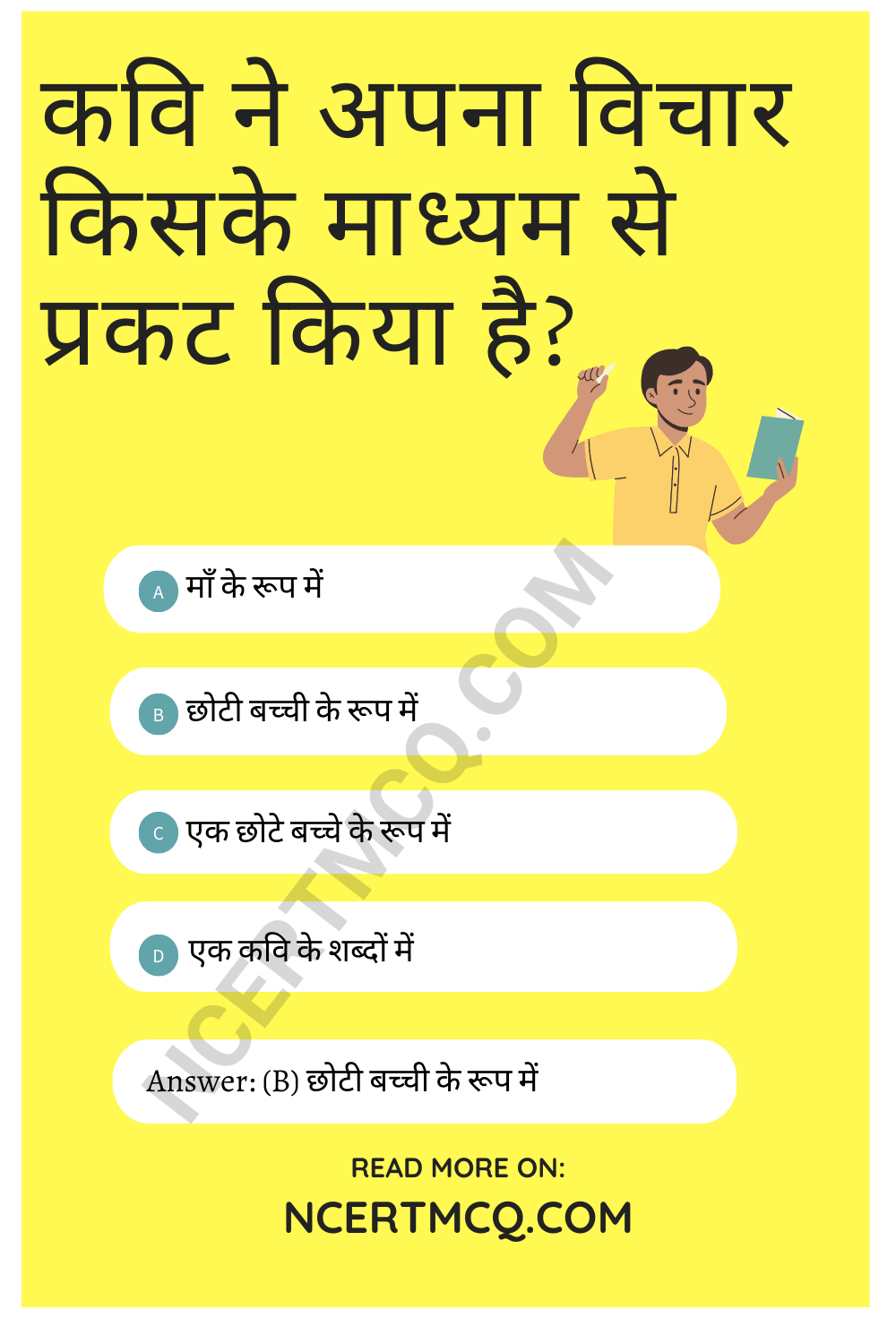
(2)
मैं सबसे छोटी होऊँ,
तेरी गोदी में सोऊँ,
तेरा अंचल पकड़-पकड़कर
फिरूँ सदा माँ! तेरे साथ,
कभी न छोड़ें तेरा हाथ!
बड़ा बनाकर पहले हमको
तू पीछे छलती है मात!
हाथ पकड़ फिर सदा हमारे
साथ नहीं फिरती दिन-रात!
Question 1.
कवि और कविता का नाम लिखिए।
Answer
Answer:
कवि का नाम-सुमित्रानंदन पंत
कविता का नाम-मैं सबसे छोटी होऊँ।
Question 2.
किसकी क्या इच्छा है?
Answer
Answer: छोटी बच्ची की यह इच्छा है कि वह सबसे छोटी हो जाए और सदा माँ की गोद में सोए।
Question 3.
वह अंचल पकड़कर क्यों फिरना चाहती है?
Answer
Answer: बच्ची अपनी माँ का अंचल पकड़कर सदा उसके साथ-साथ फिरना चाहती है ताकि उसे माँ का प्यार मिलता रहे।
(3)
अपने कर से खिला, धुला मुख,
धूल पोंछ, सज्जित कर गात,
थमा खिलौने, नहीं सुनाती
हमें सुखद परियों की बात!
कहूँ-दिखा दे चंद्रोदय!
ऐसी बड़ी न होऊँ मैं,
तेरा स्नेह न खोऊँ मैं,
तेरे अंचल की छाया में
छिपी रहूँ निस्पृह, निर्भय,
Question 1.
बड़ा होने पर माँ क्या नहीं करती?
Answer
Answer: बड़ा होने पर माँ बच्चों को खाना नहीं खिलाती, मुँह नहीं धुलाती, सजाती-सँवारती नहीं, खिलौने नहीं देती और परियों की कहानी नहीं सुनाती।
Question 2.
बच्ची माँ से क्या अपेक्षा करती है?
Answer
Answer: बच्ची माँ से अपेक्षा रखती है कि उसका हाथ पकड़कर दिन-रात उसे घुमाए, हाथ से खिलाए, नहलाए-धुलाए, उसे सजाए, परियों की कहानियाँ सुनाए और खिलौने दे।
Question 3.
बच्ची माँ के साथ हरदम क्यों रहना चाहती है?
Answer
Answer: बच्ची माँ के साथ हरदम इसलिए रहना चाहती है ताकि सदा वह बच्ची के रूप में ही रहना चाहती है, क्योंकि माँ का साथ छूटना उसे अच्छा नहीं लगता।
We hope the given NCERT MCQ Questions for Class 6 Hindi Vasant Chapter 13 मैं सबसे छोटी होऊँ with Answers Pdf free download will help you. If you have any queries regarding CBSE Class 6 Hindi मैं सबसे छोटी होऊँ MCQs Multiple Choice Questions with Answers, drop a comment below and we will get back to you soon.
